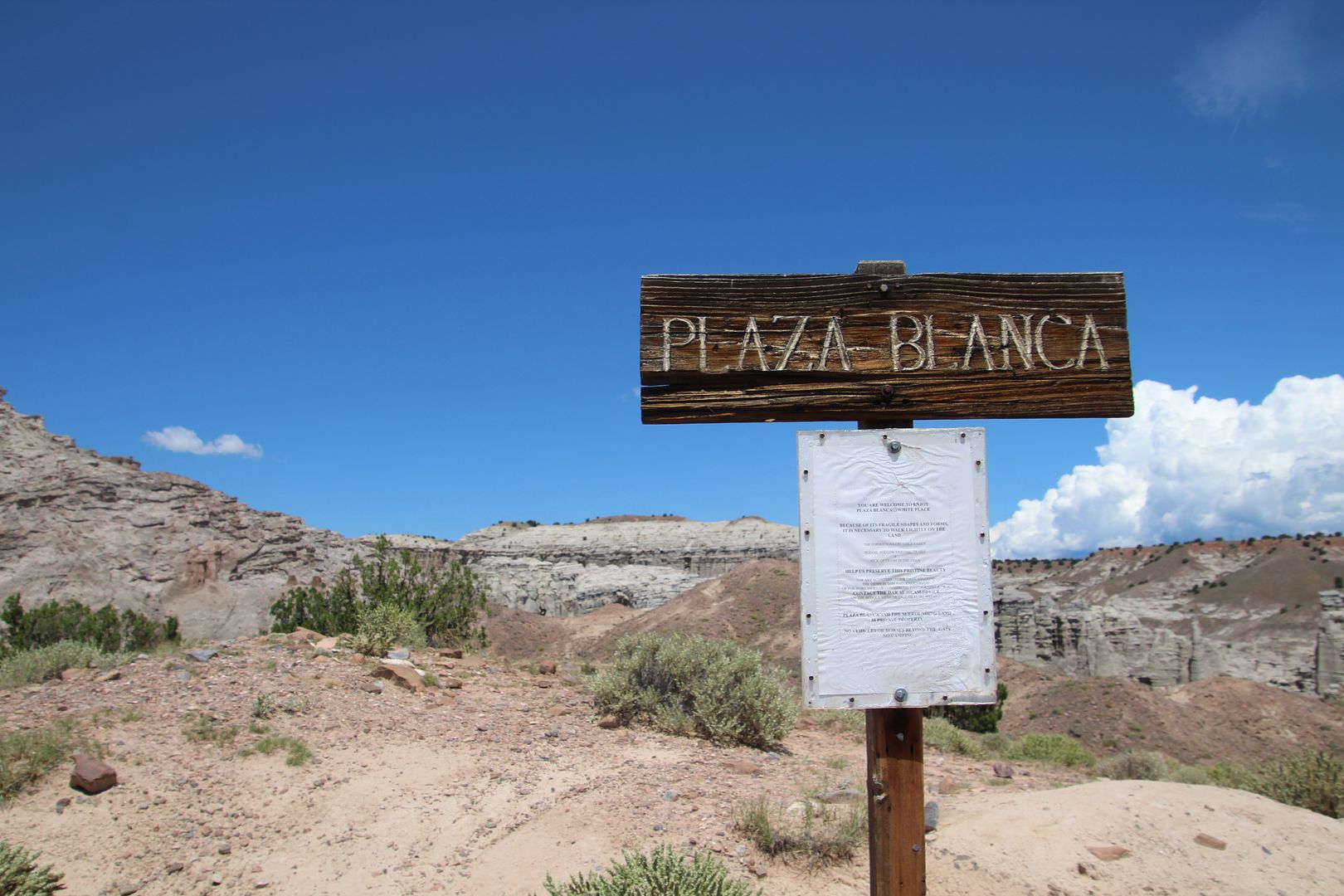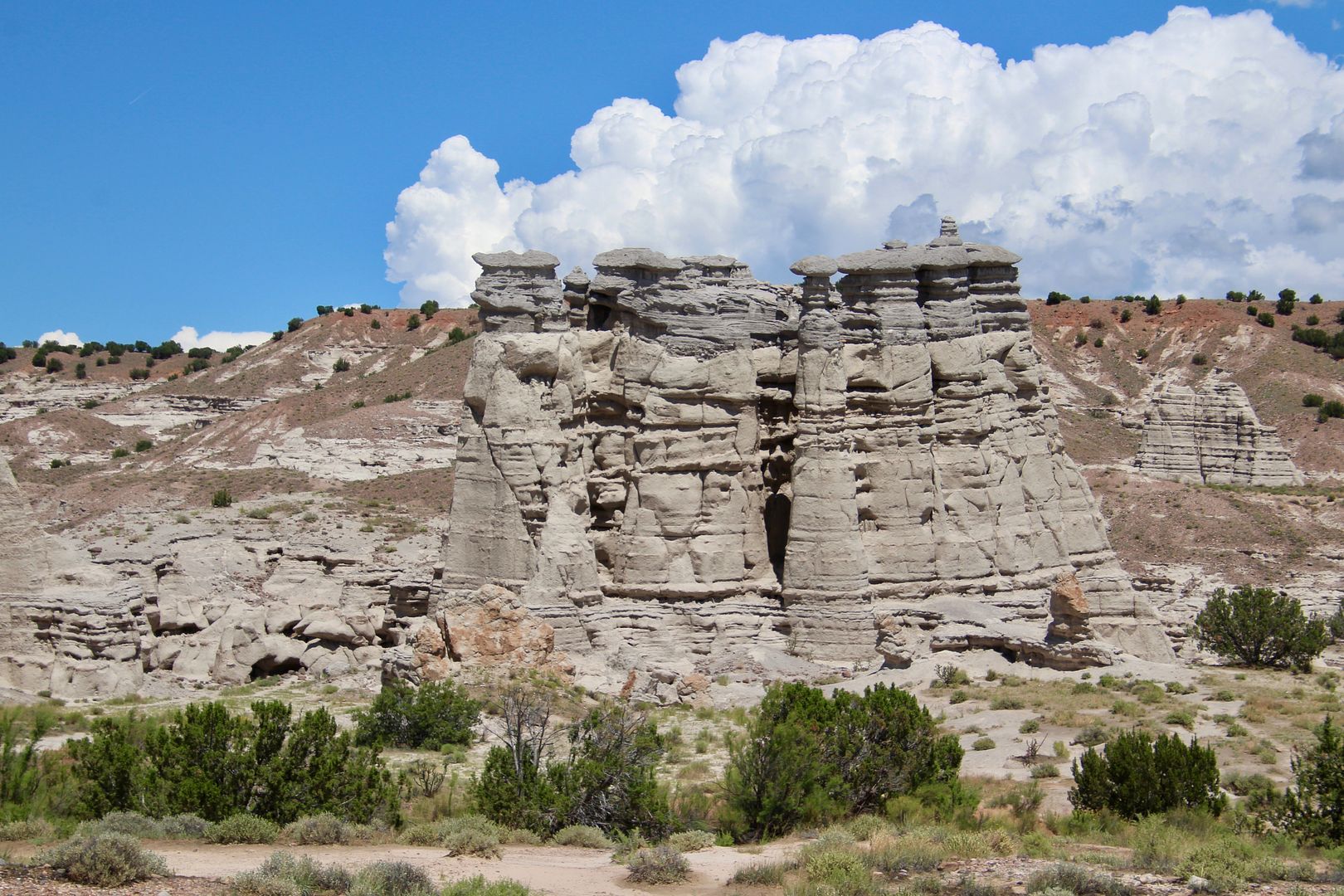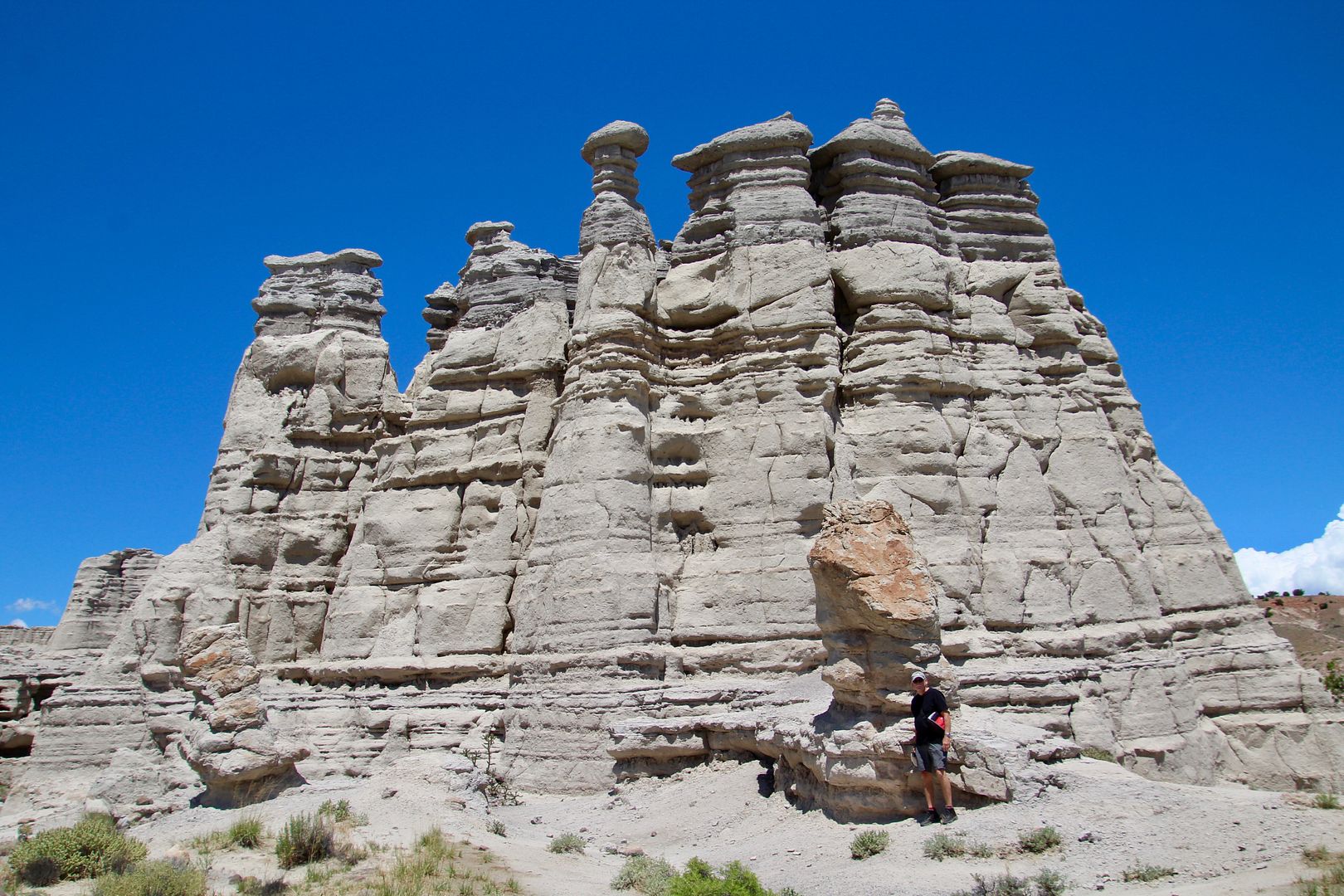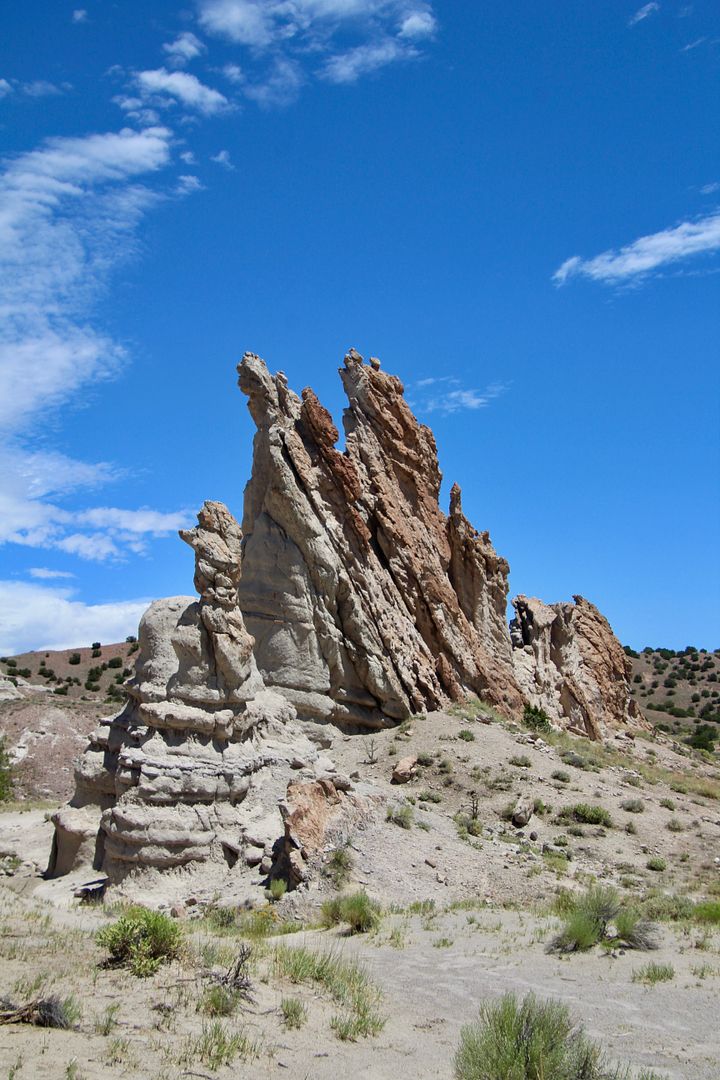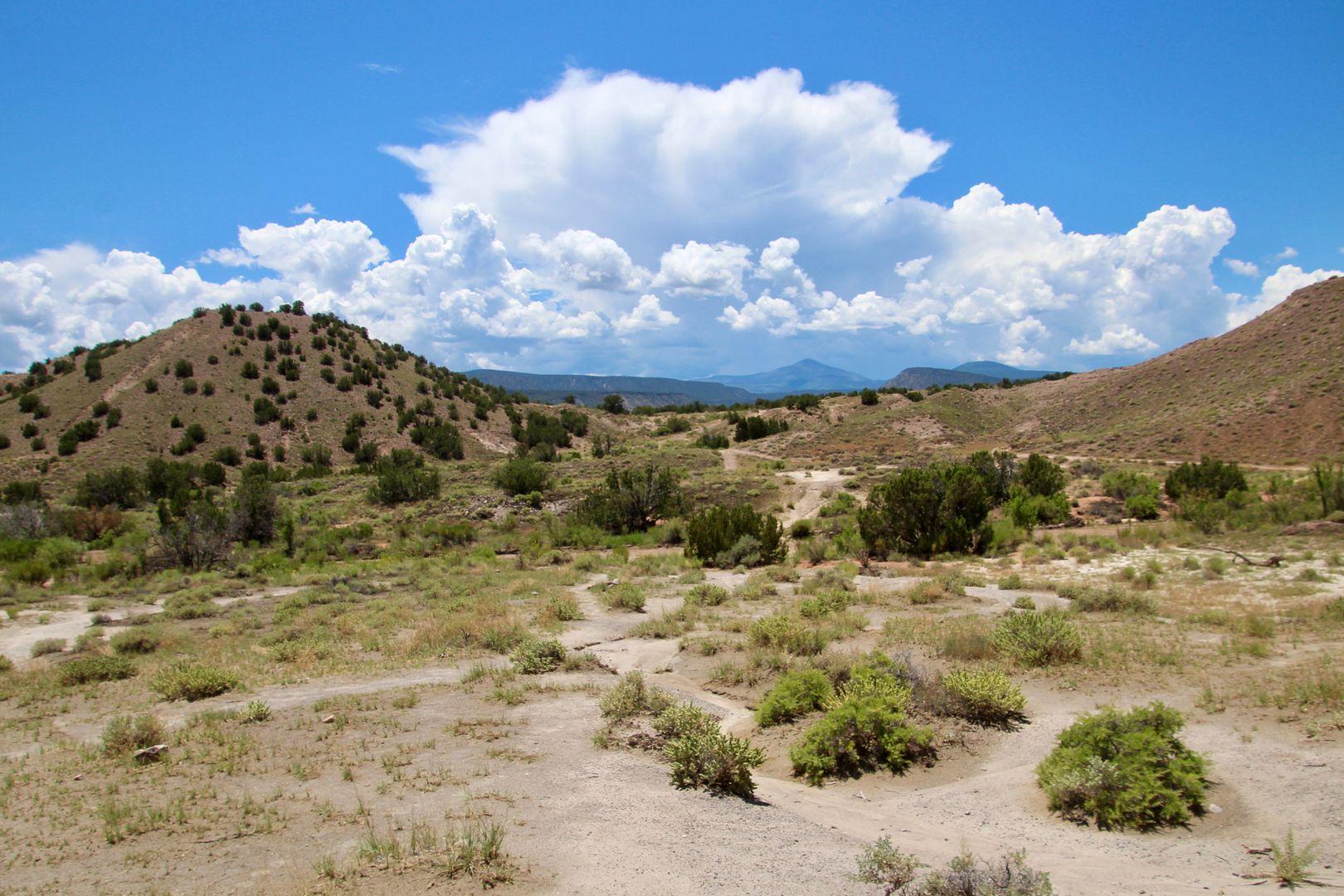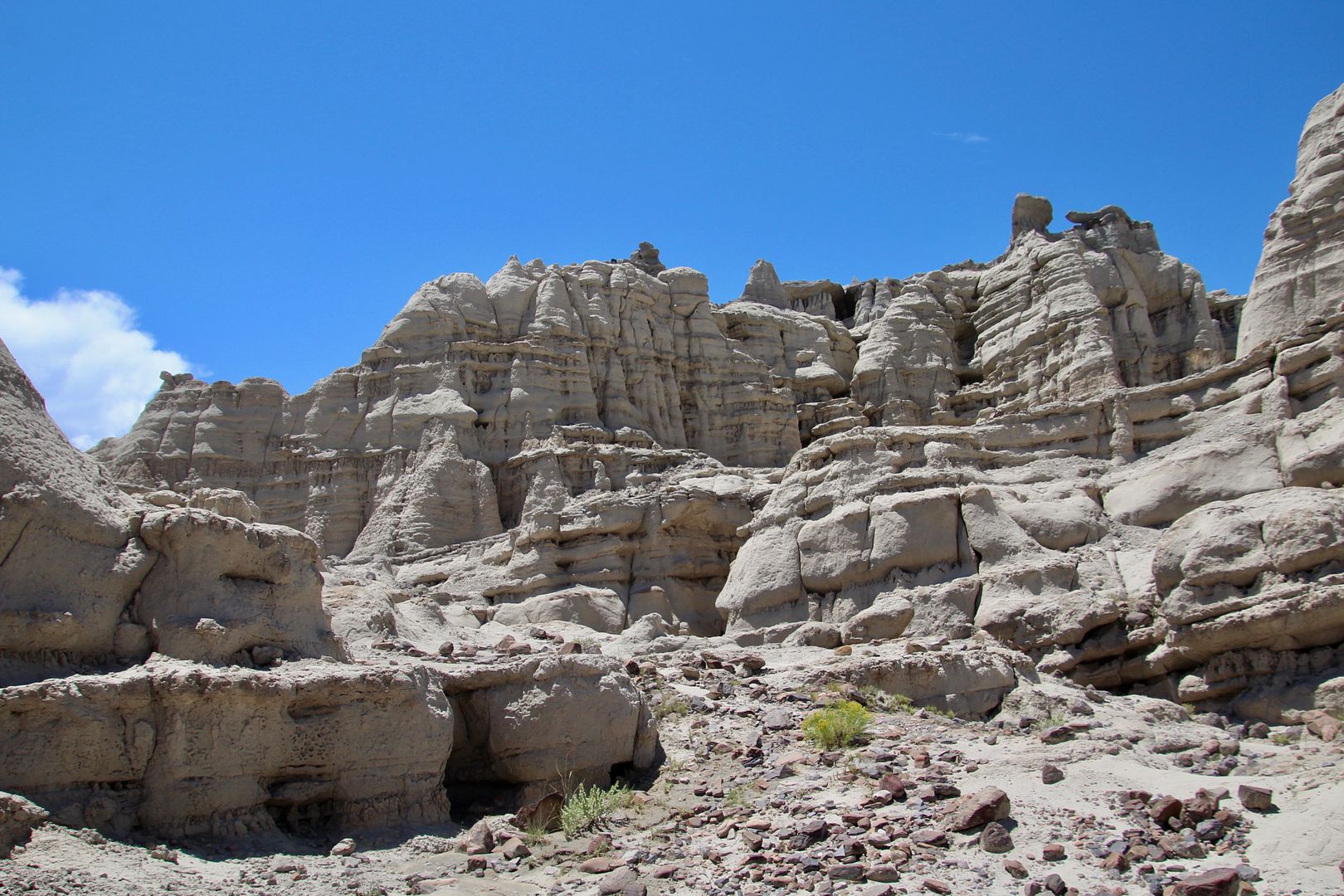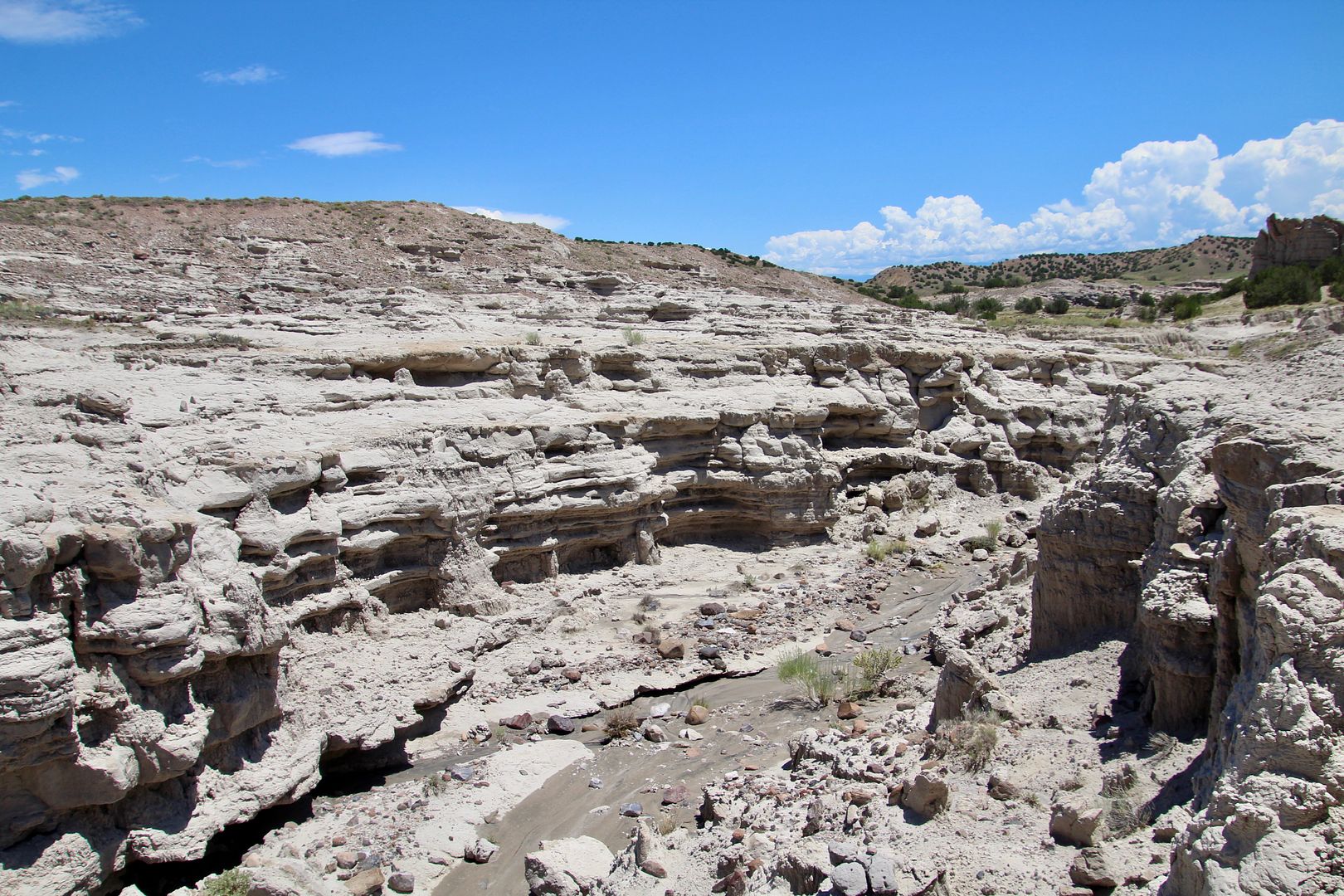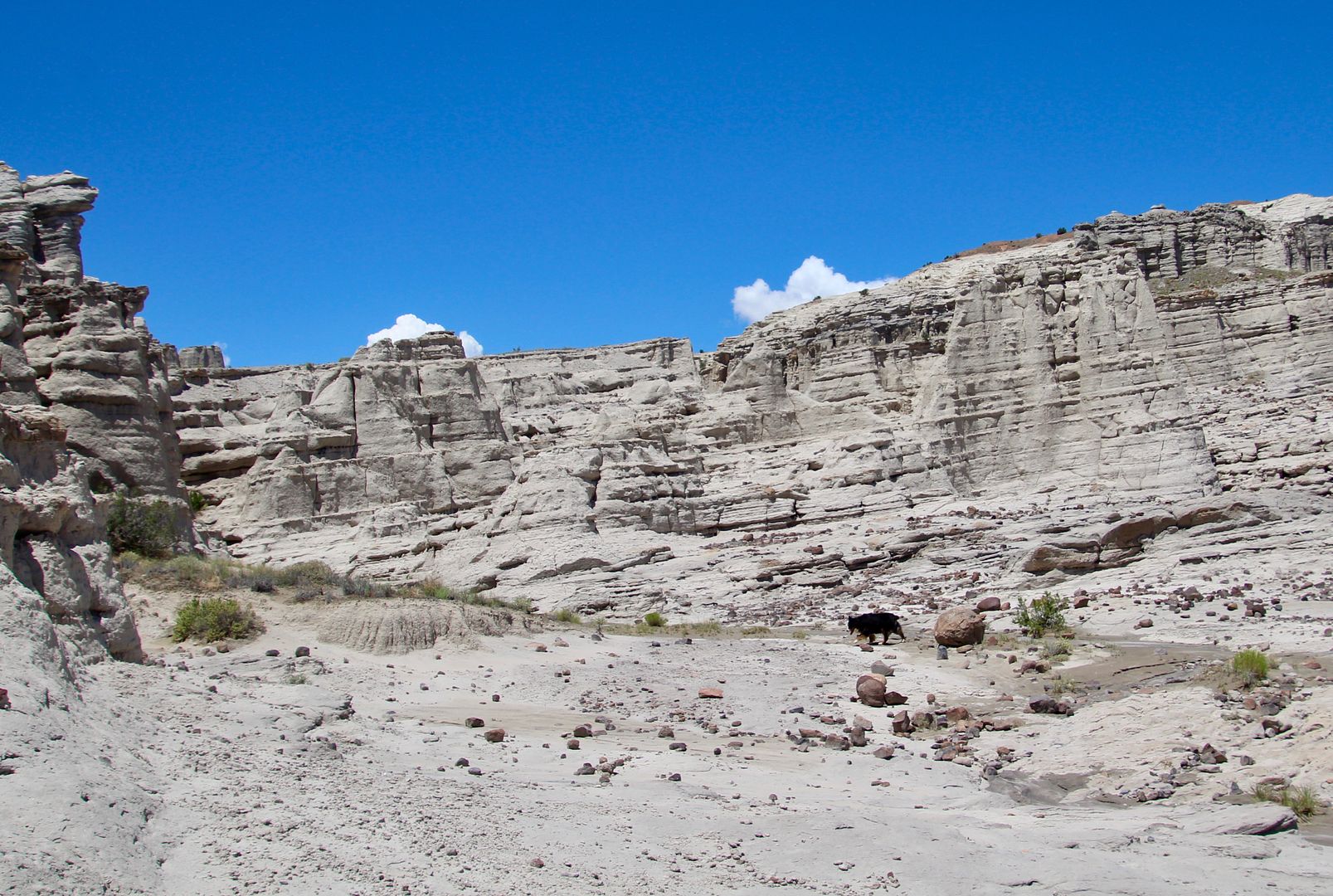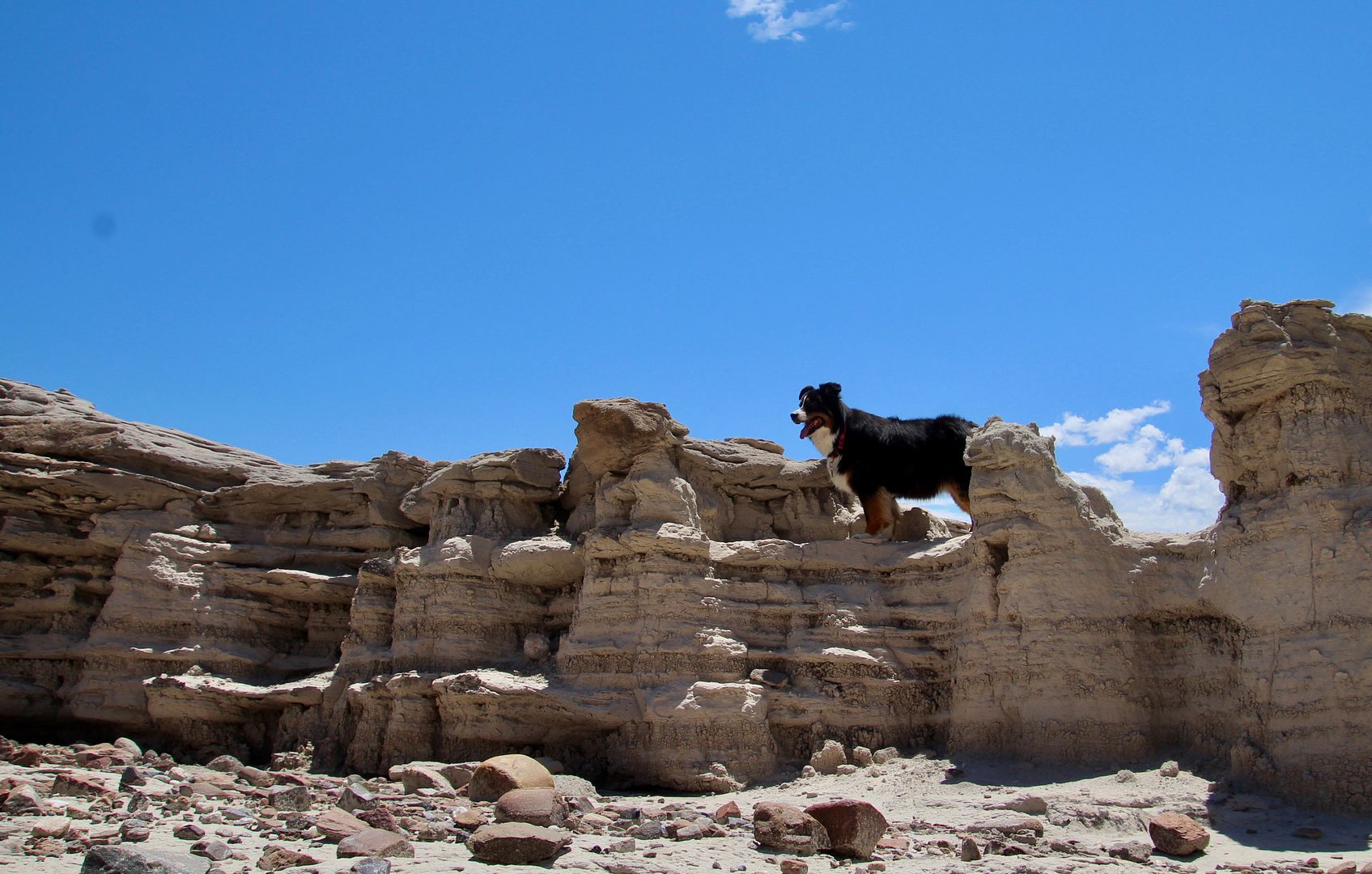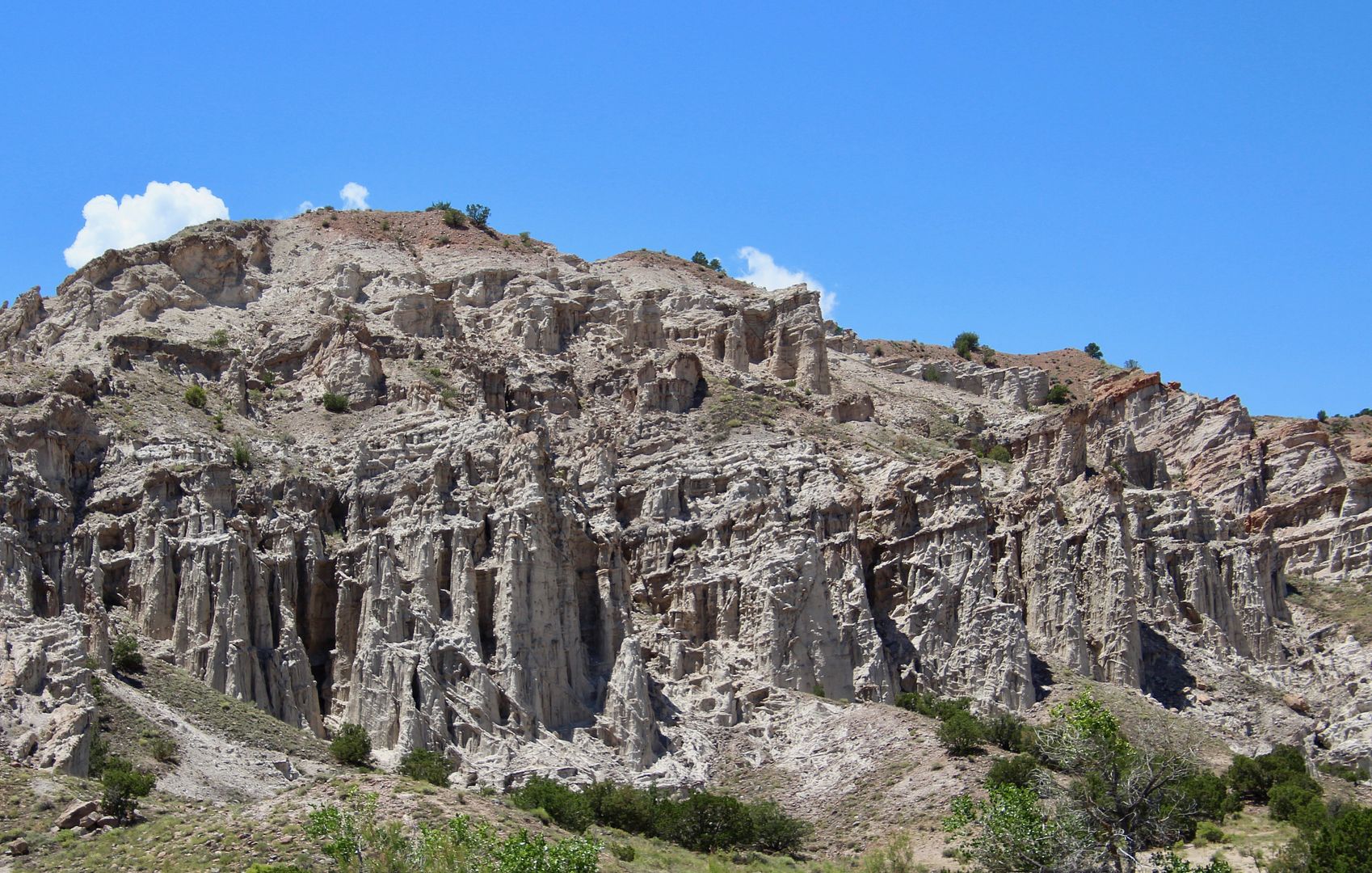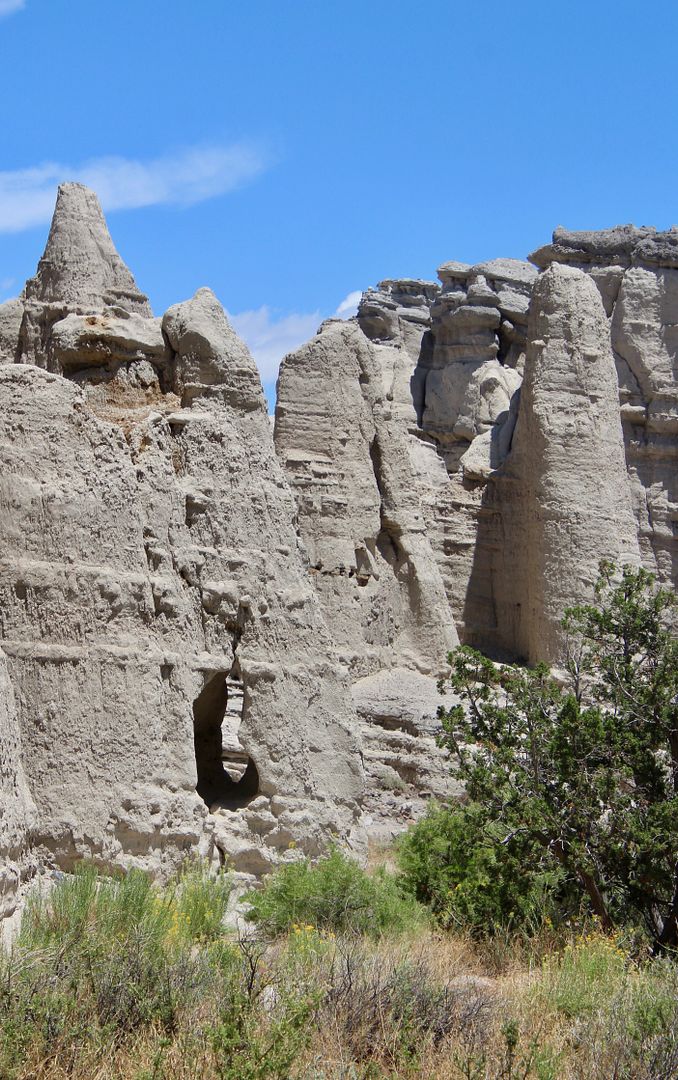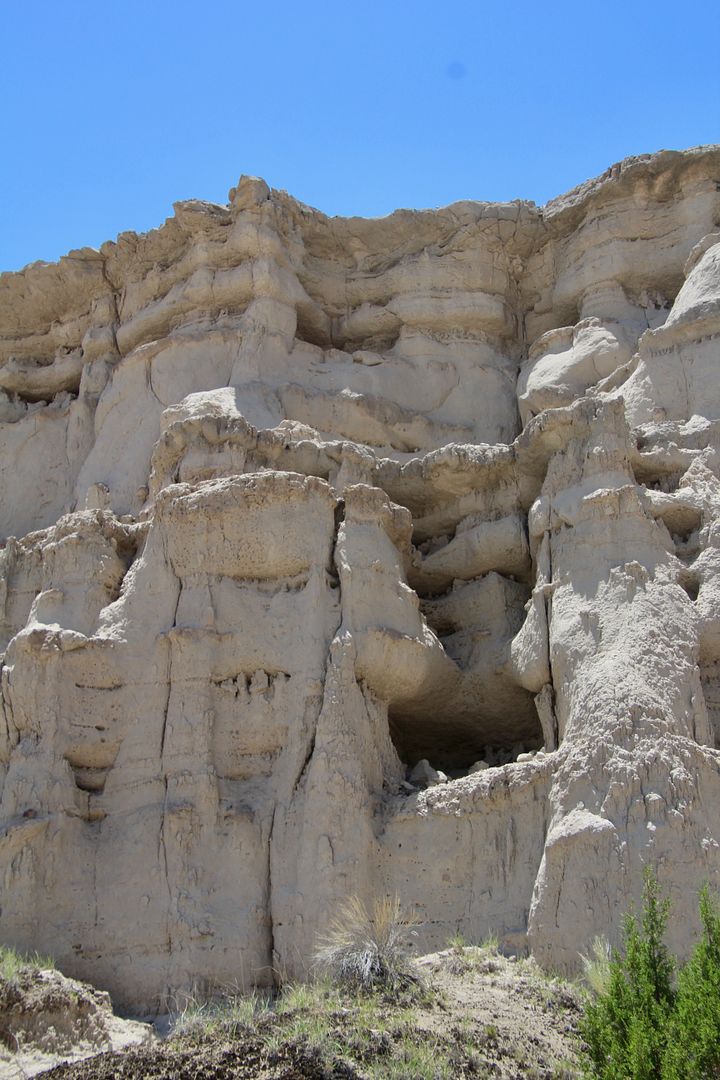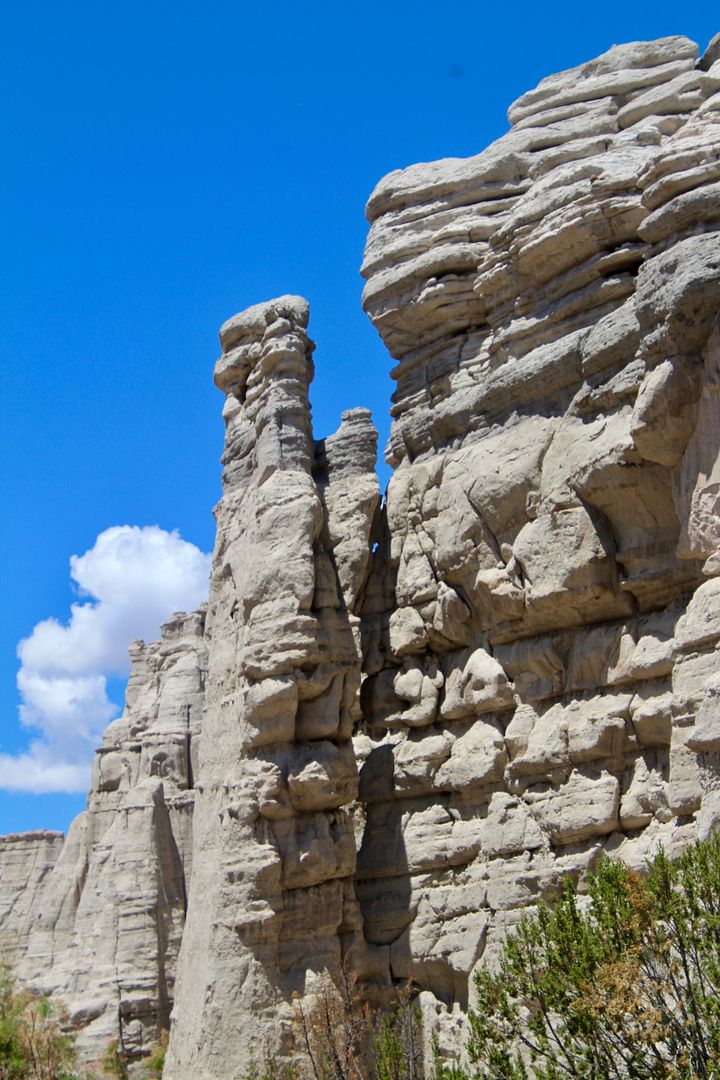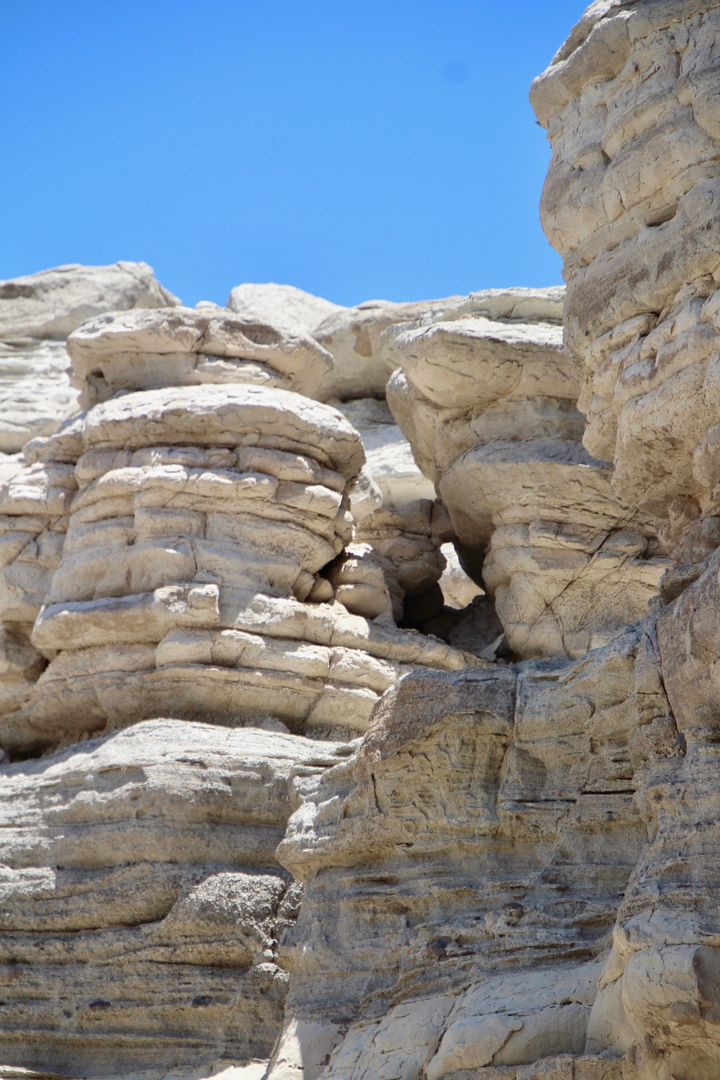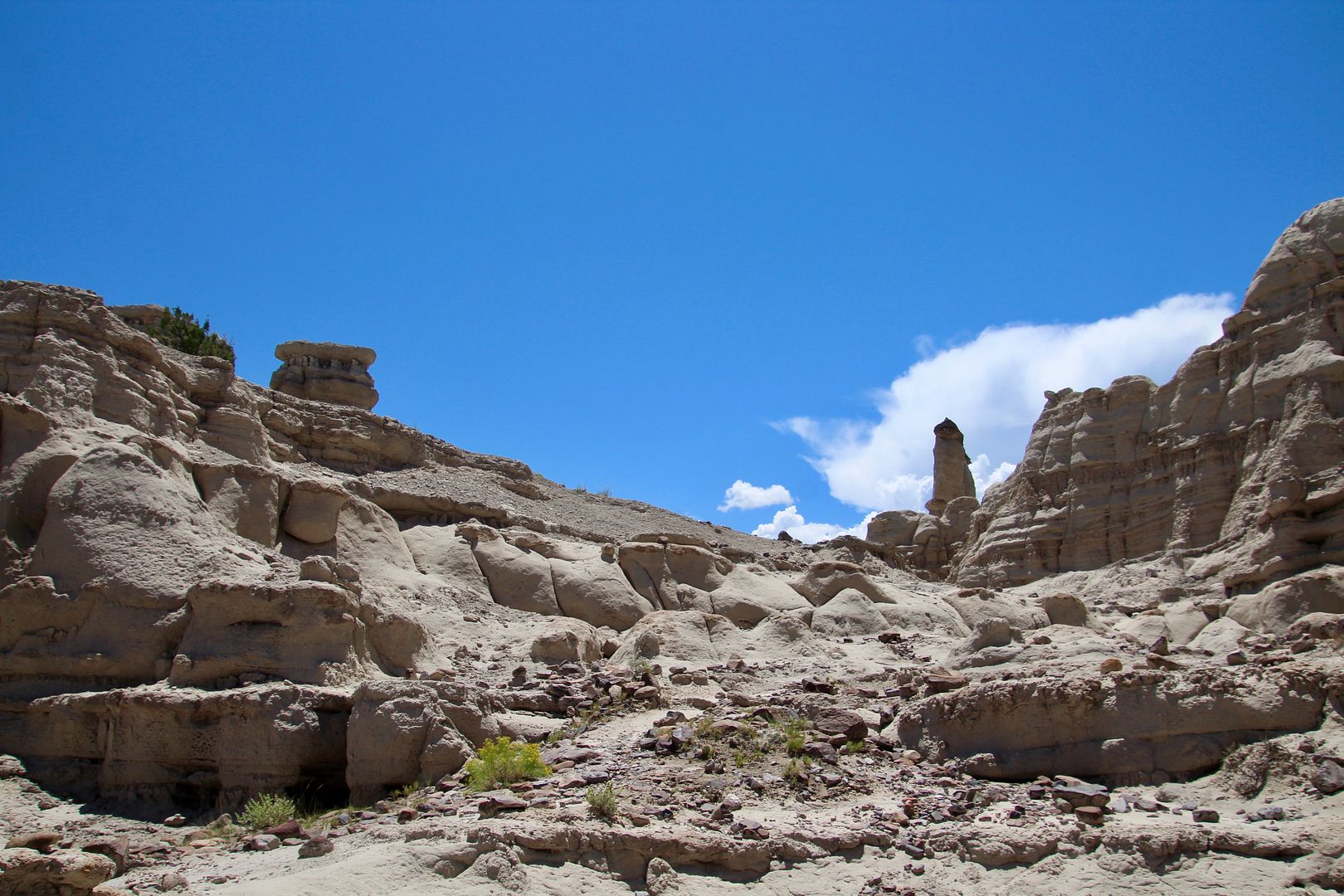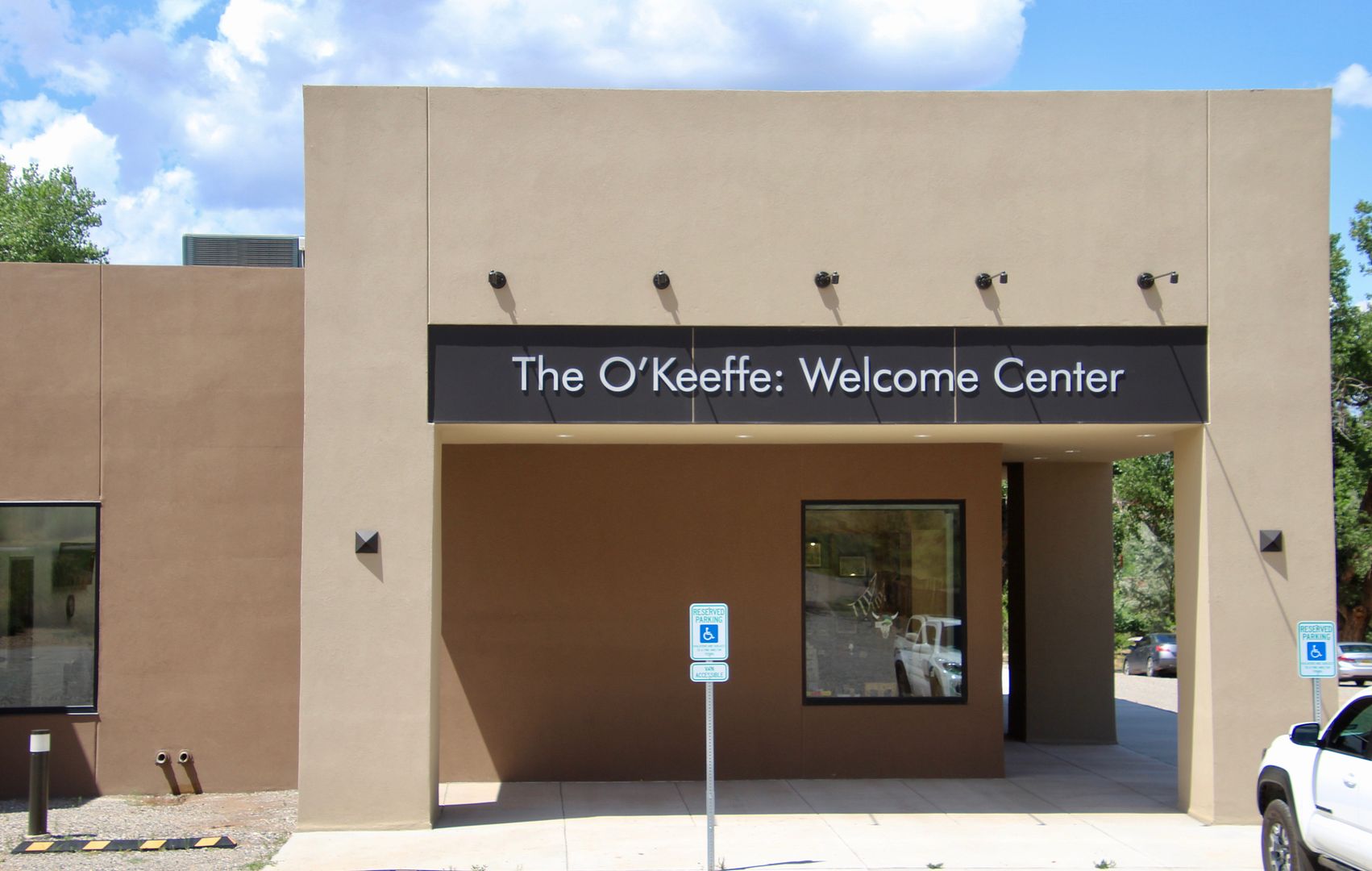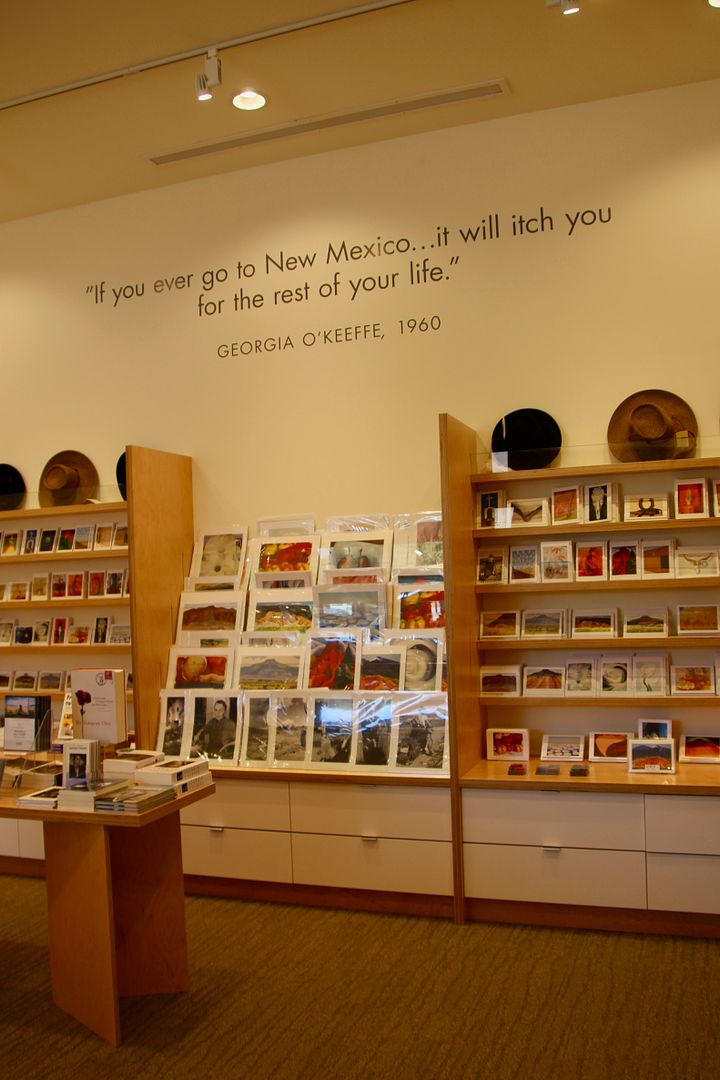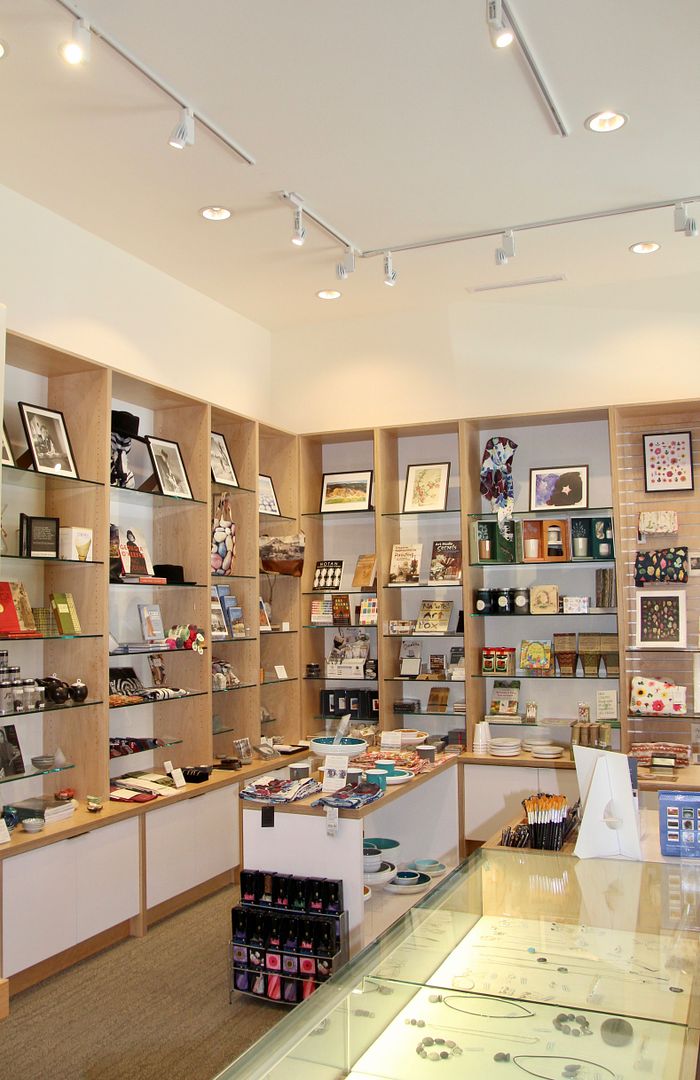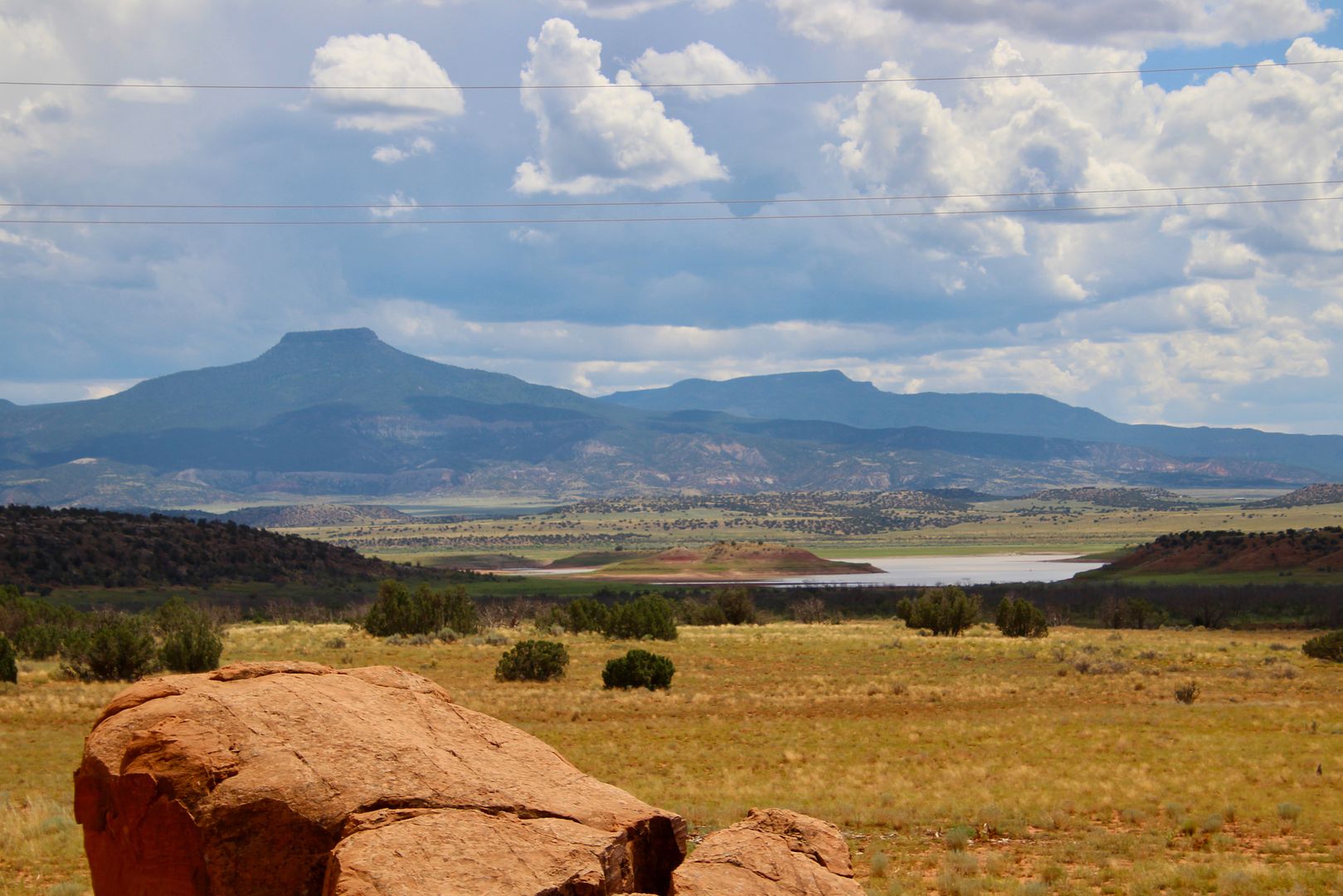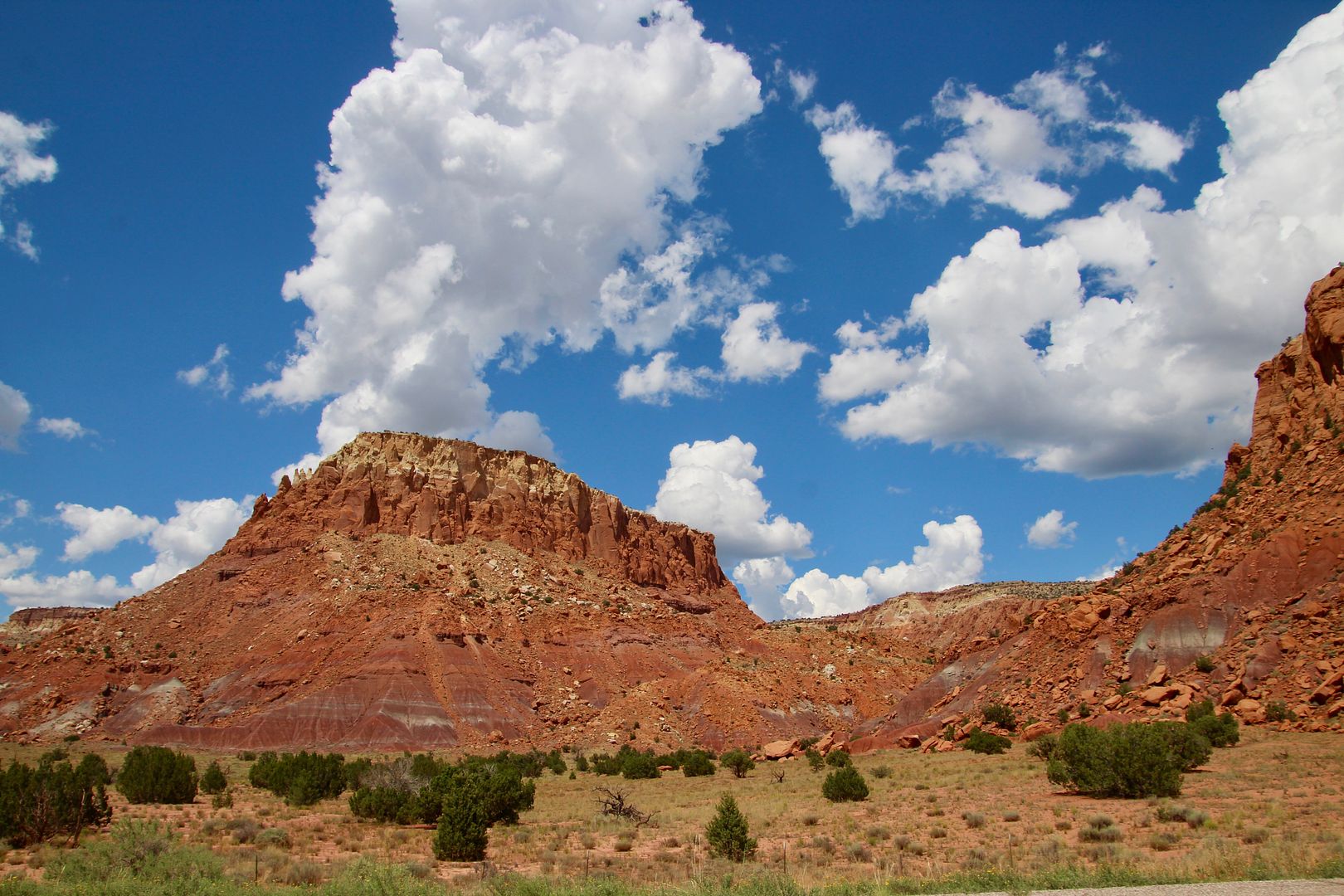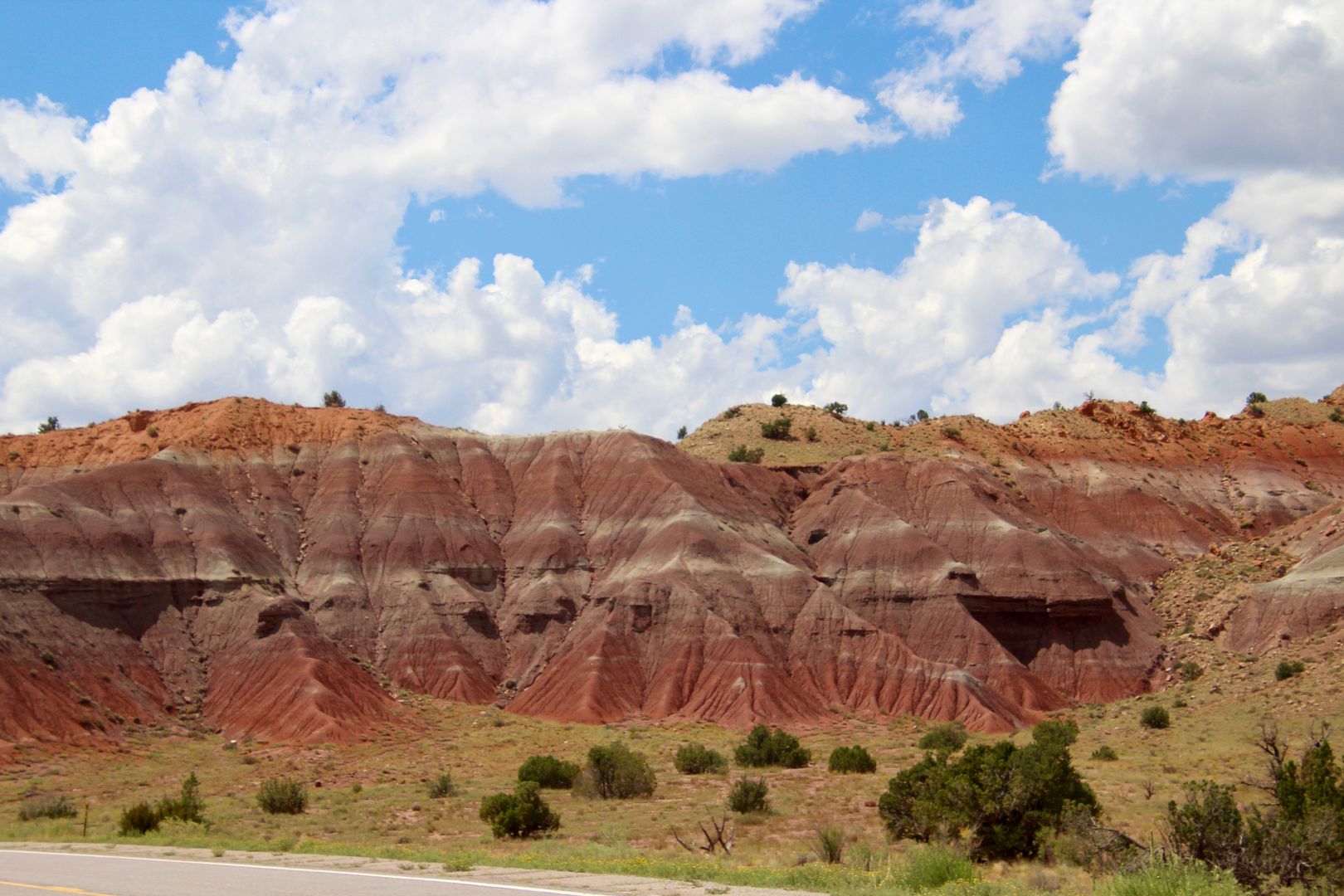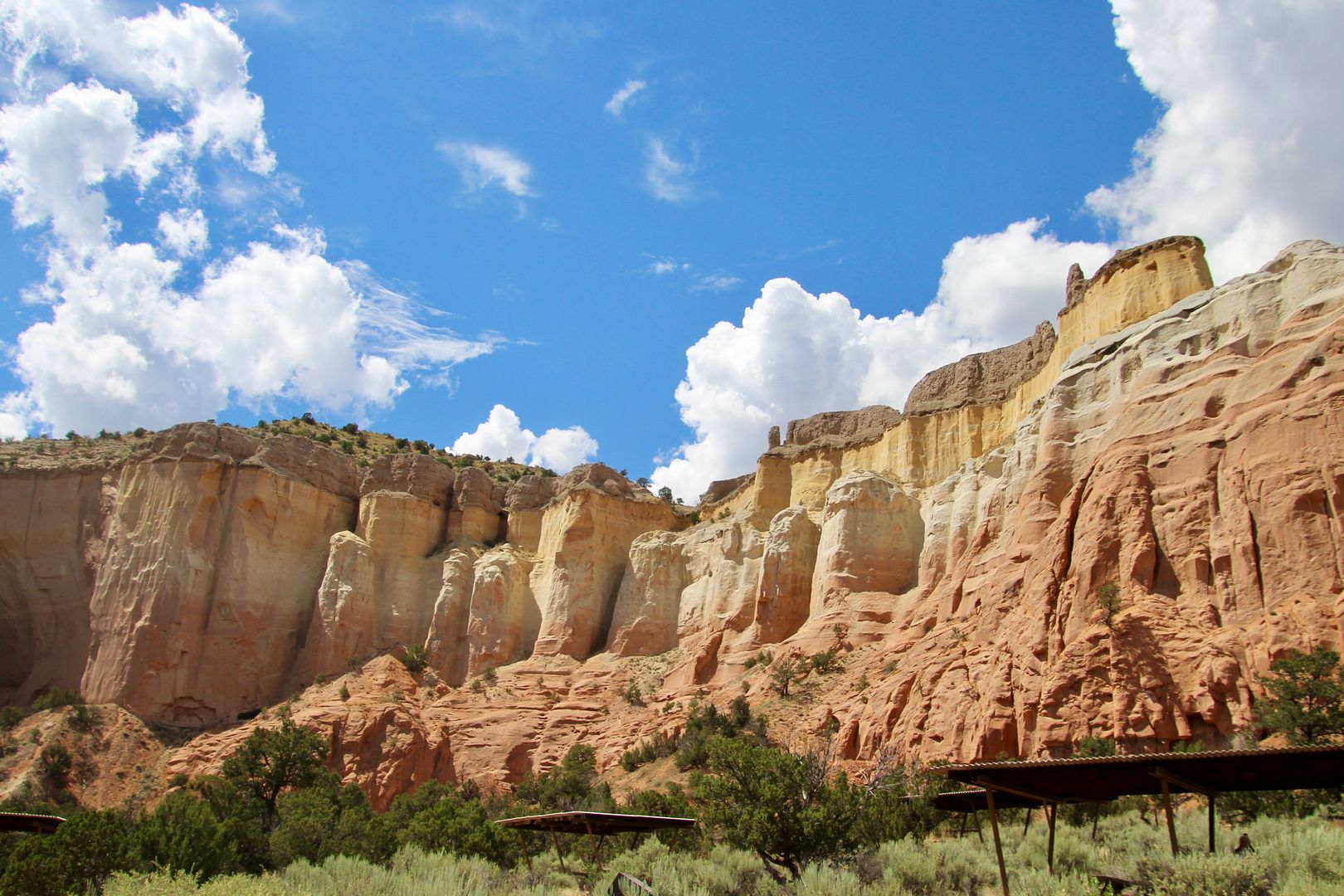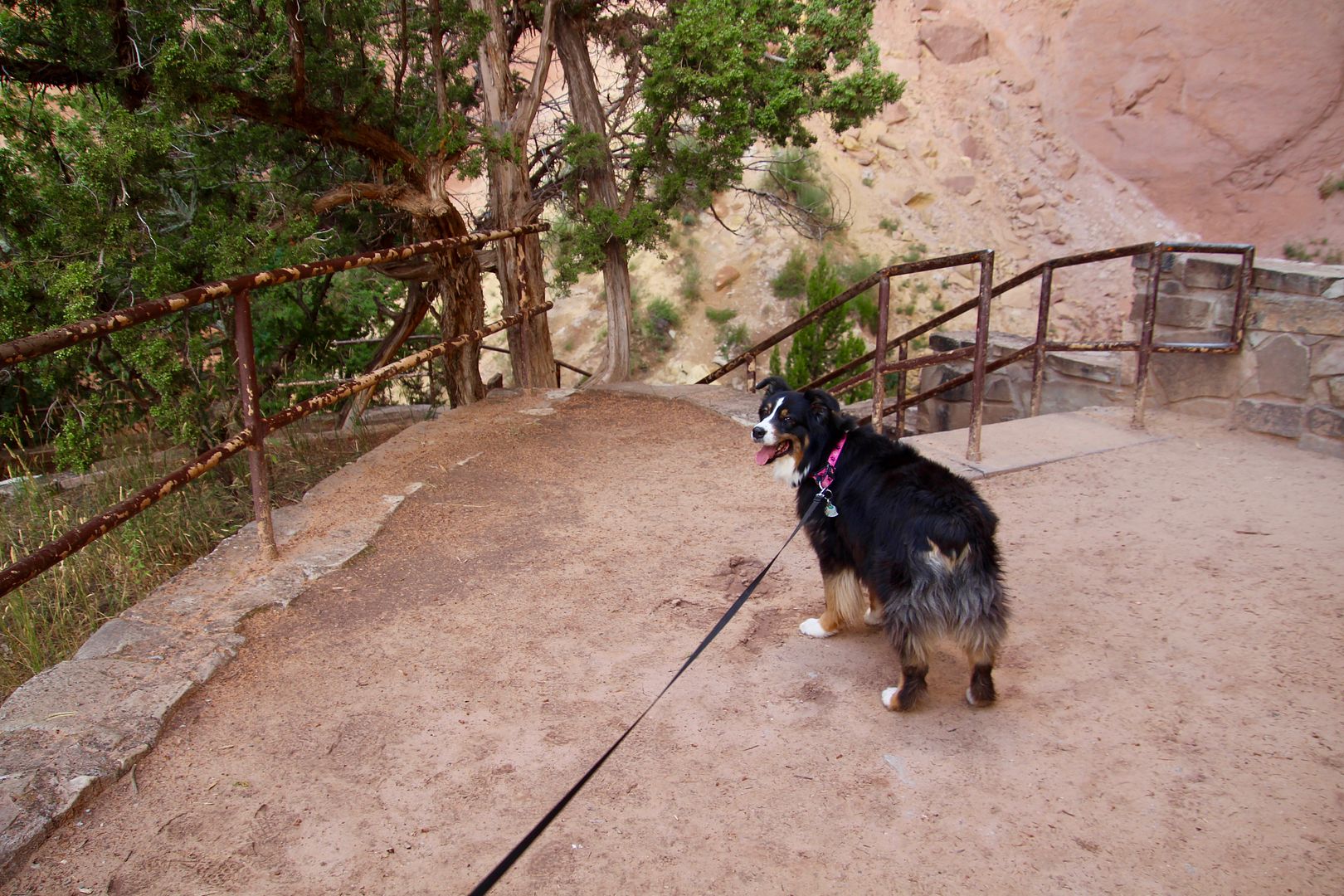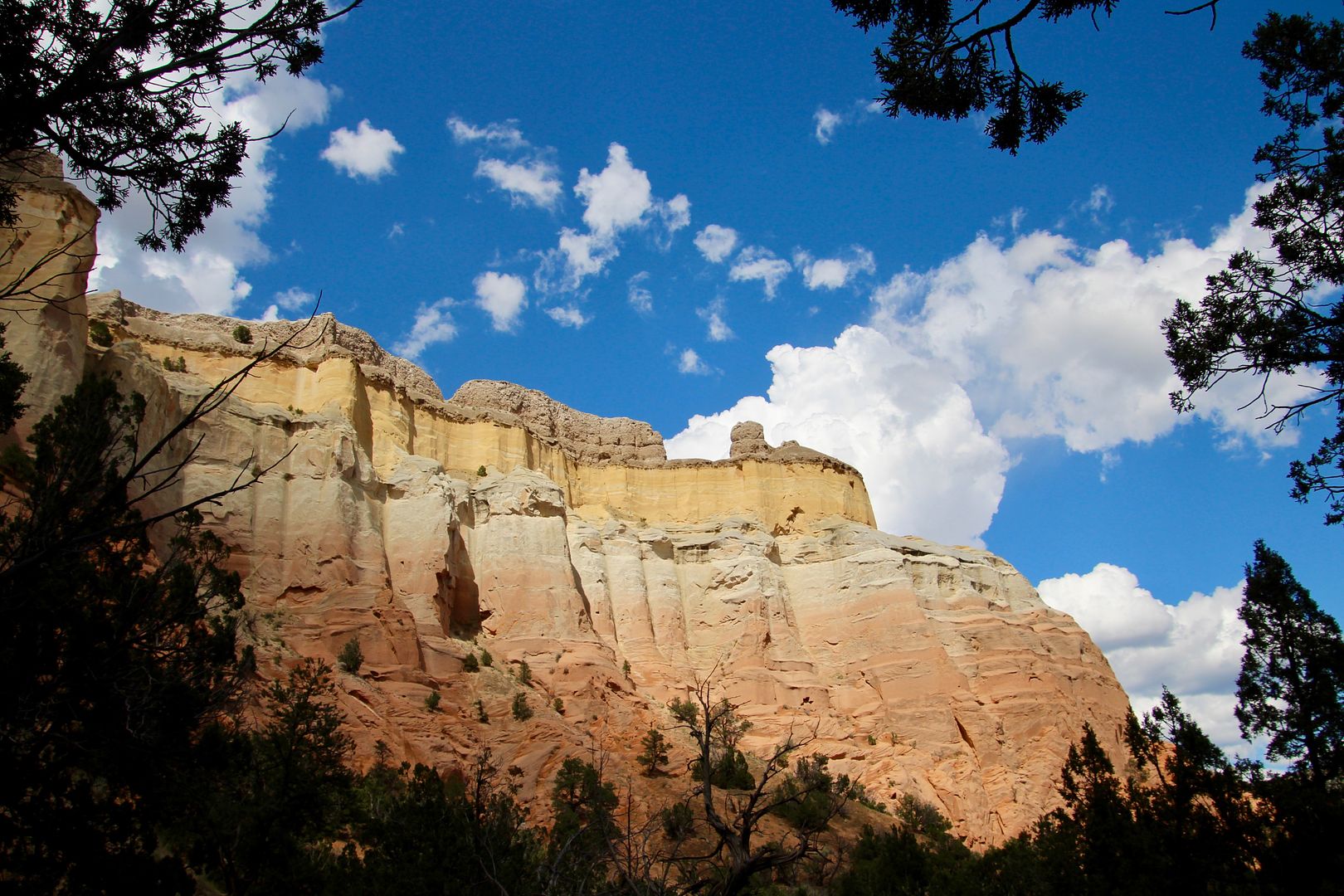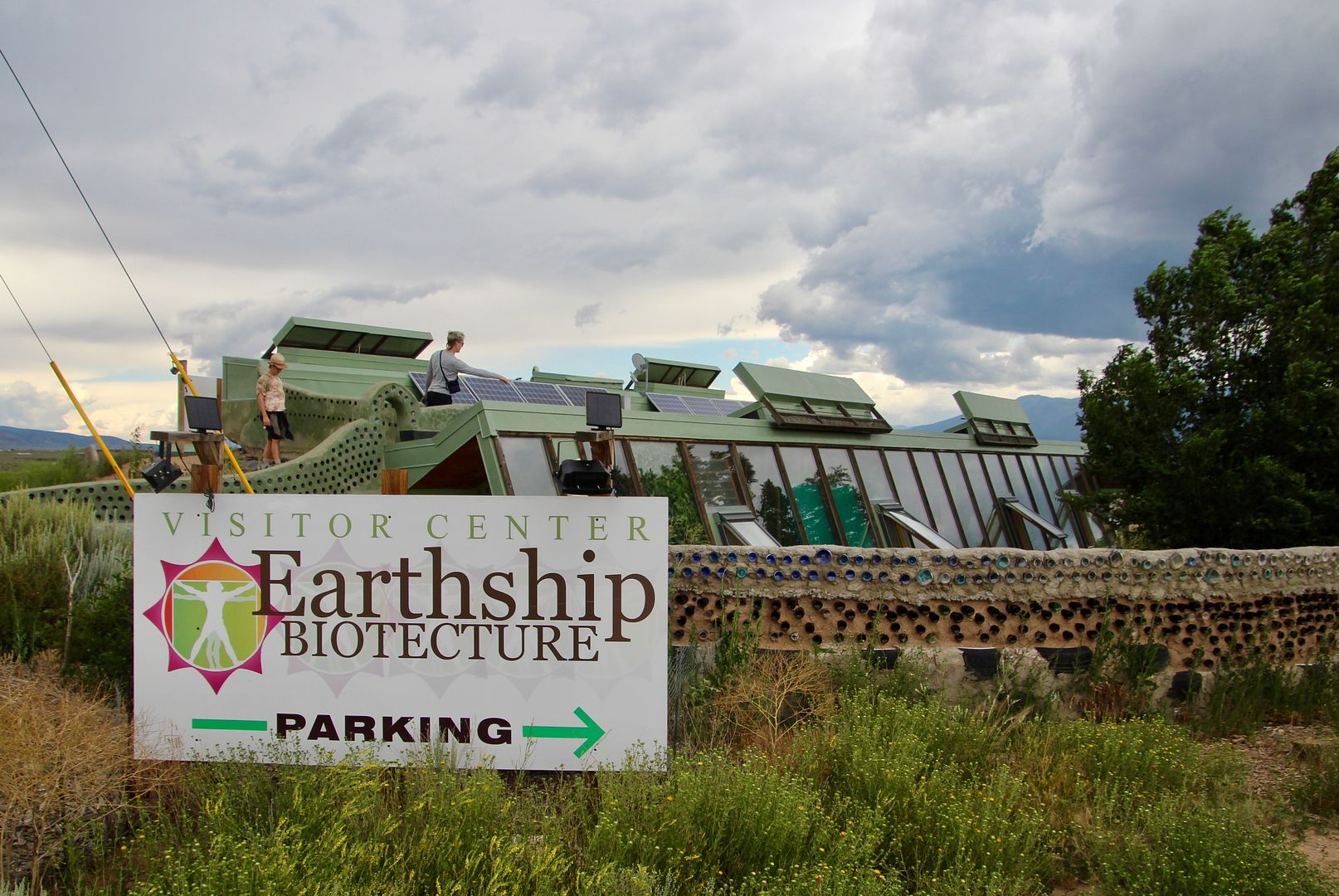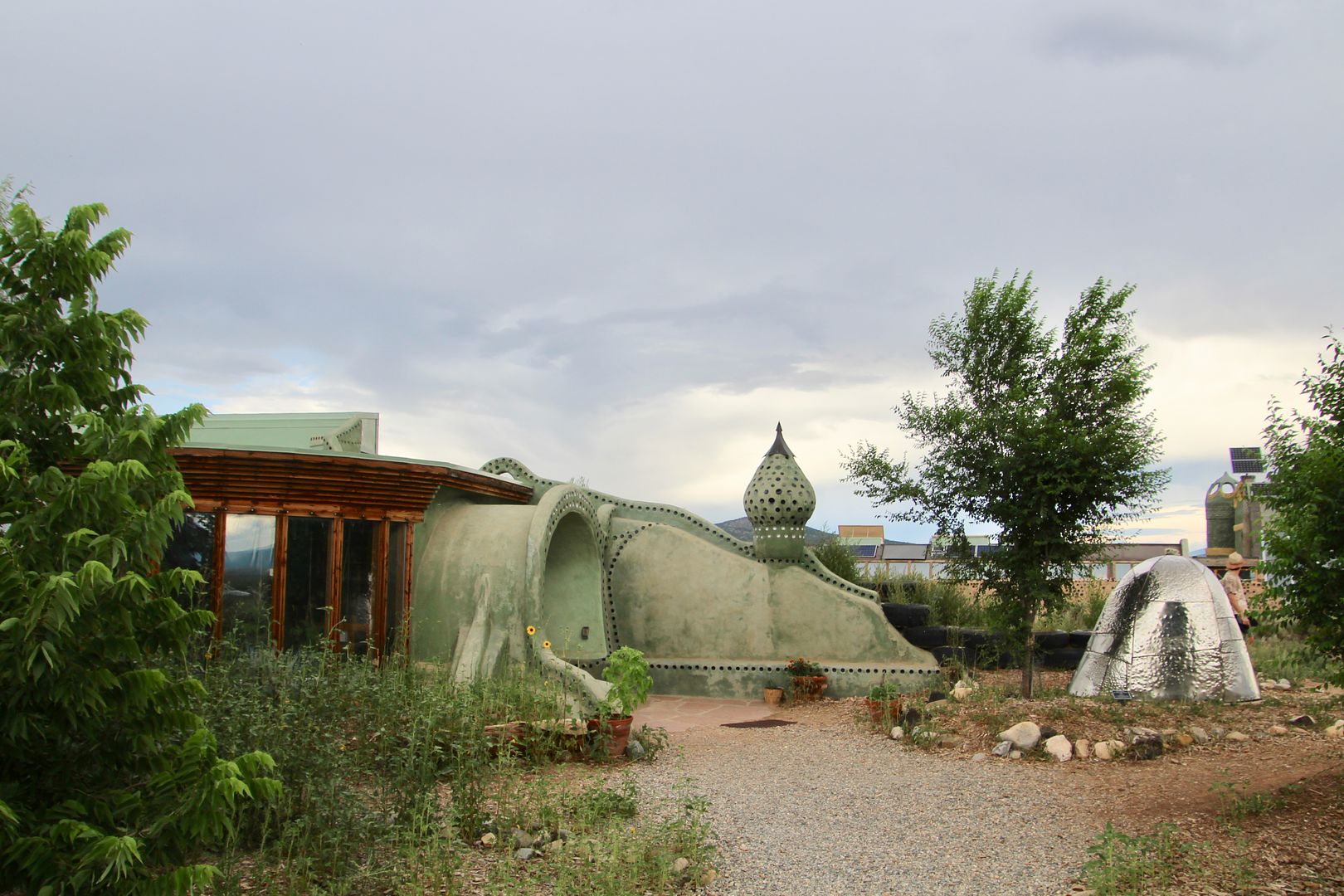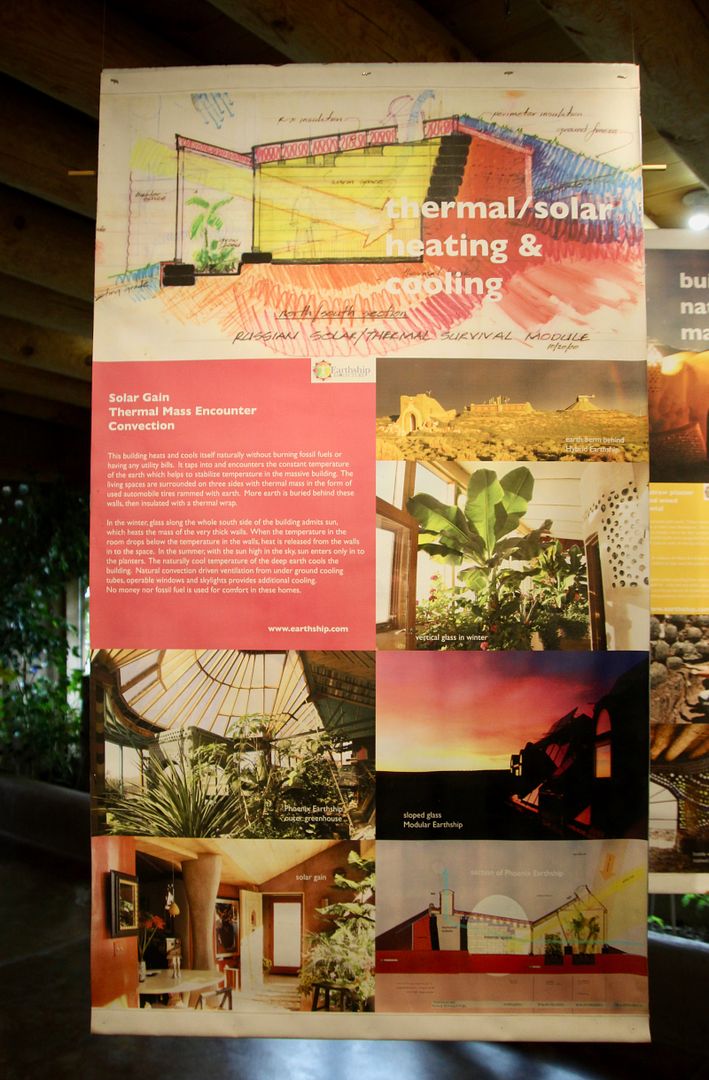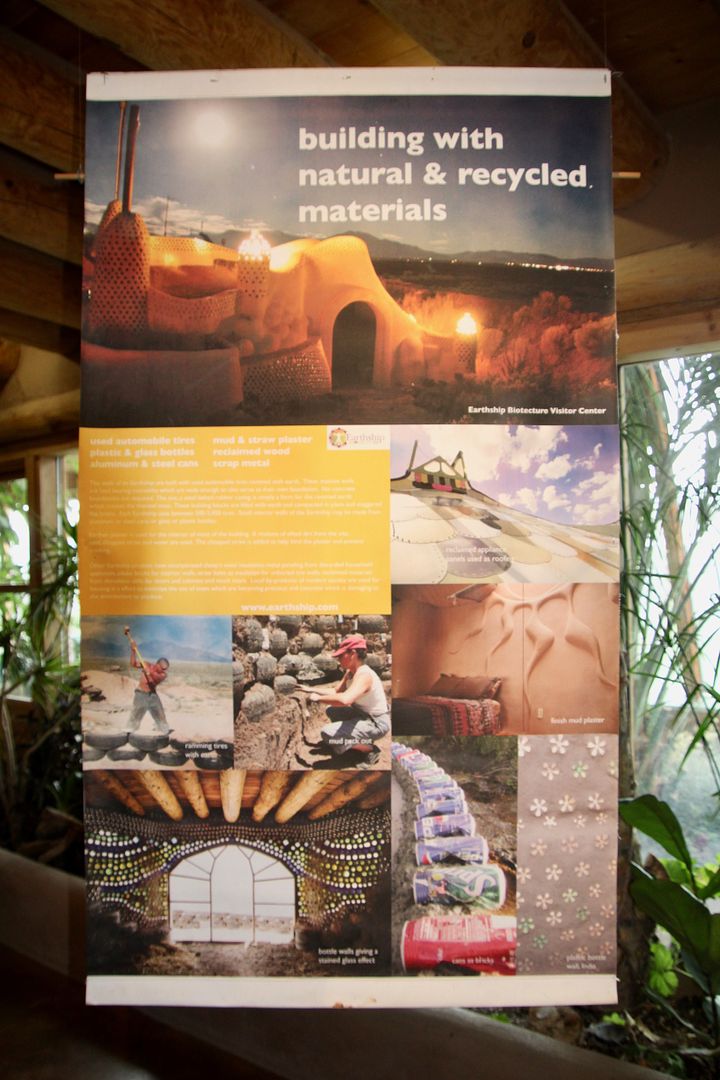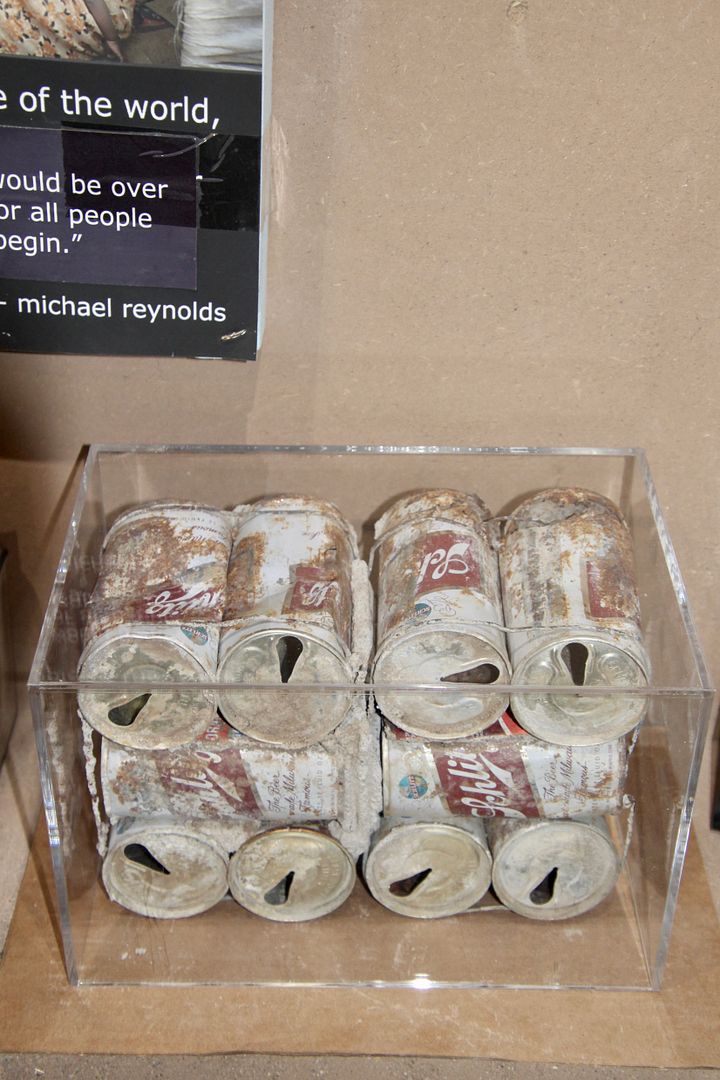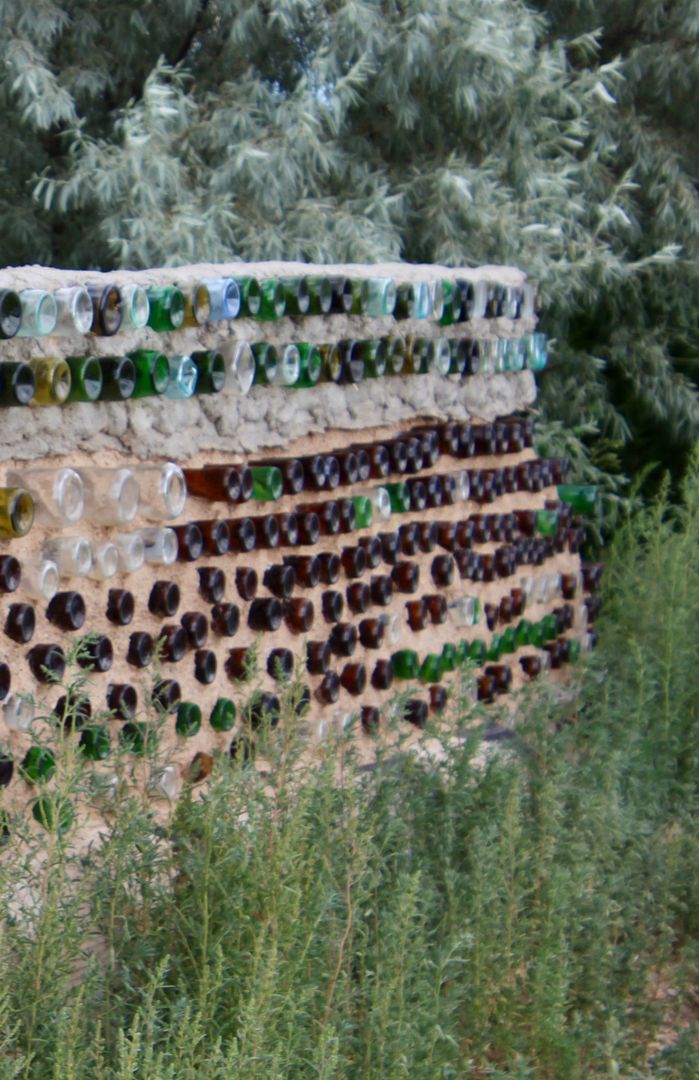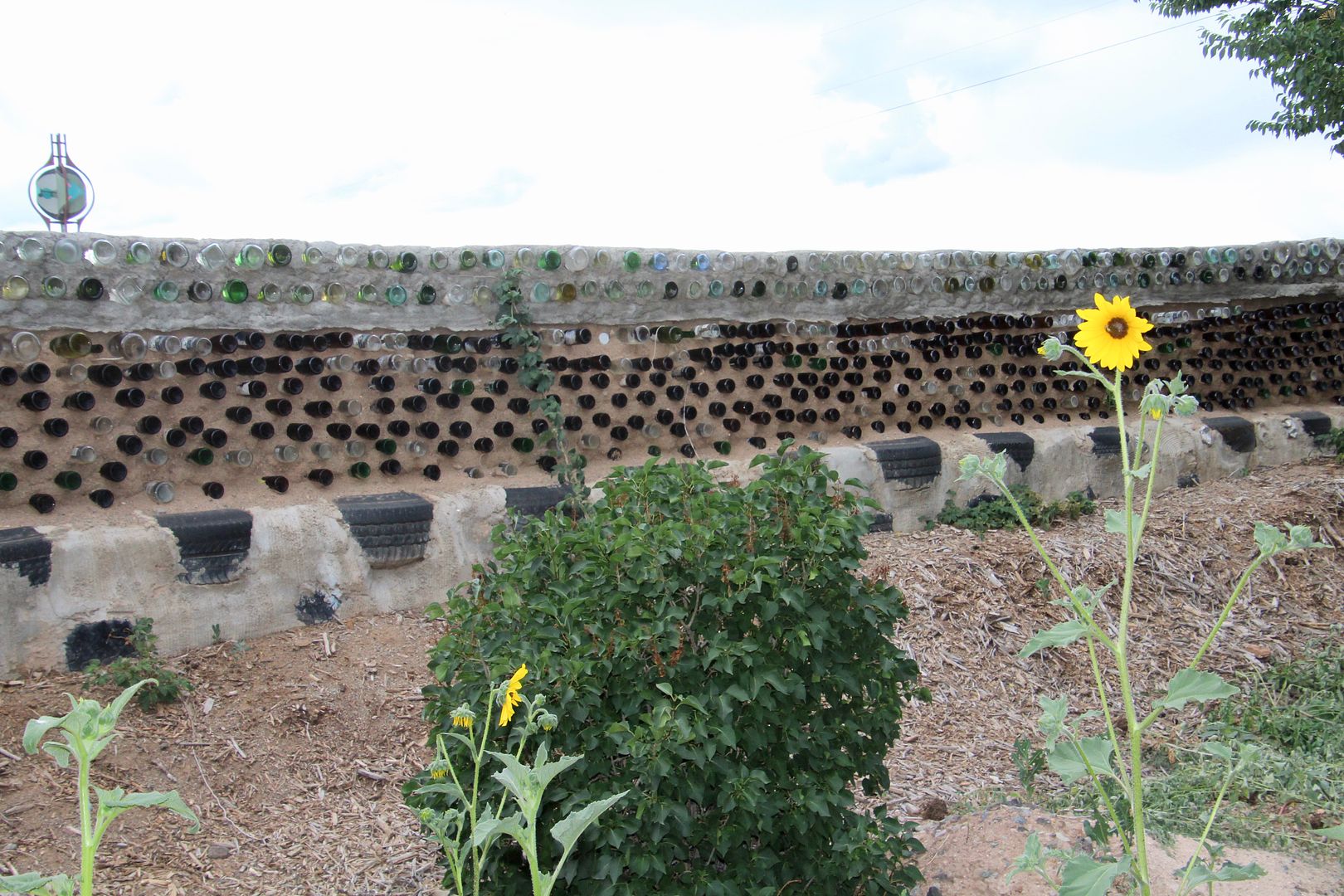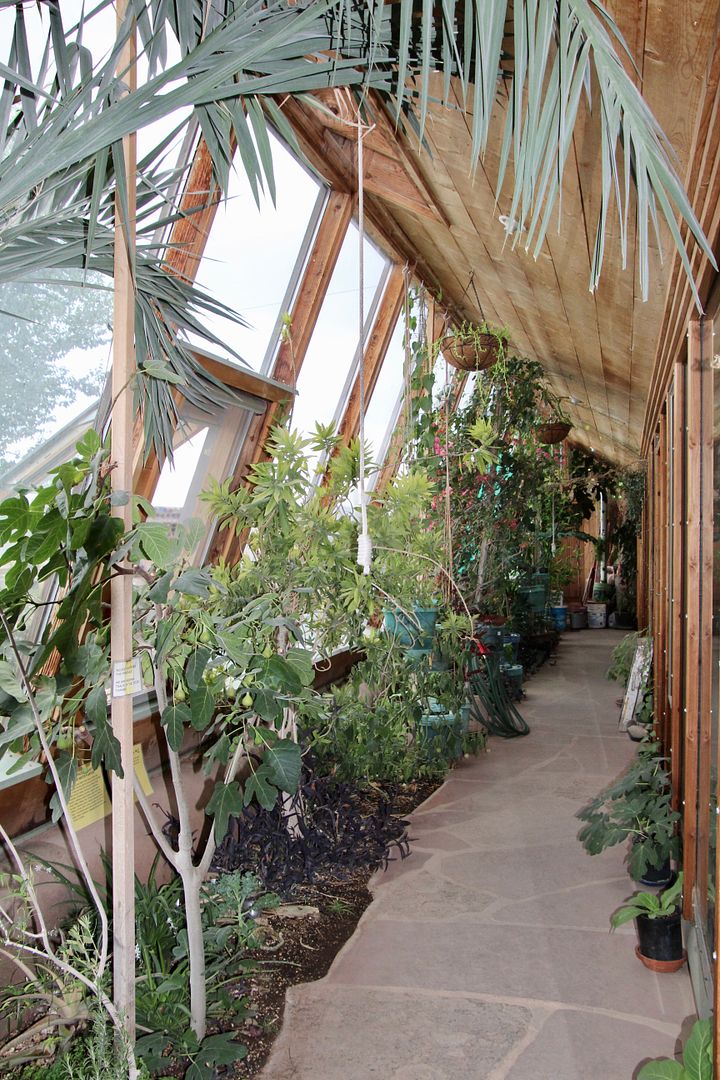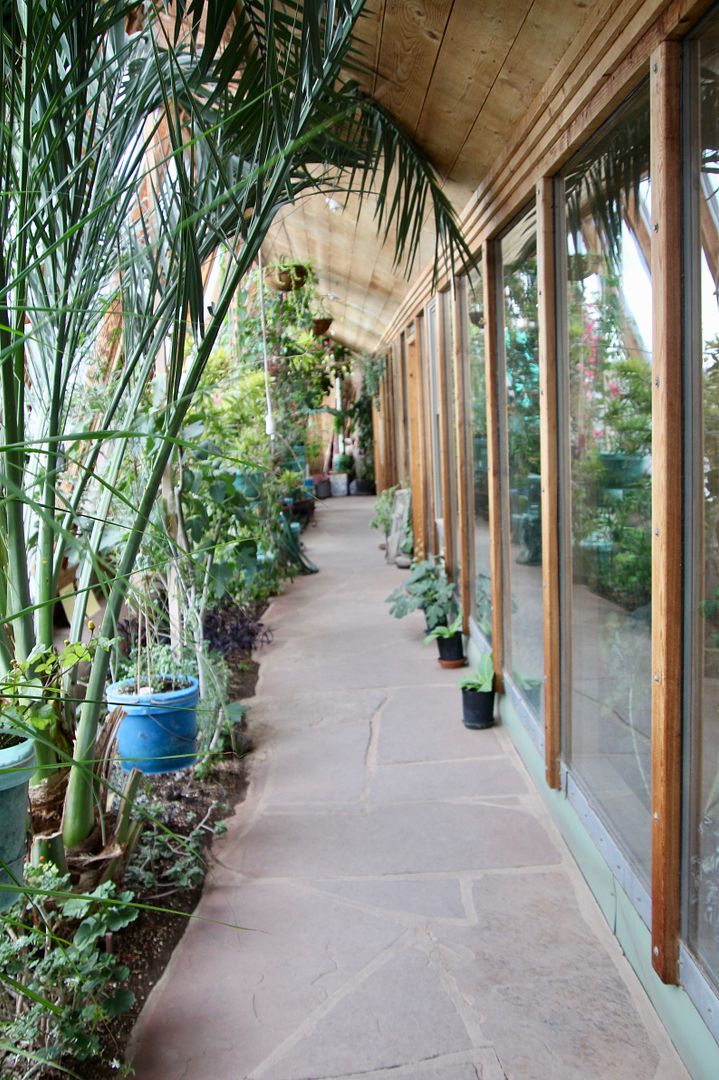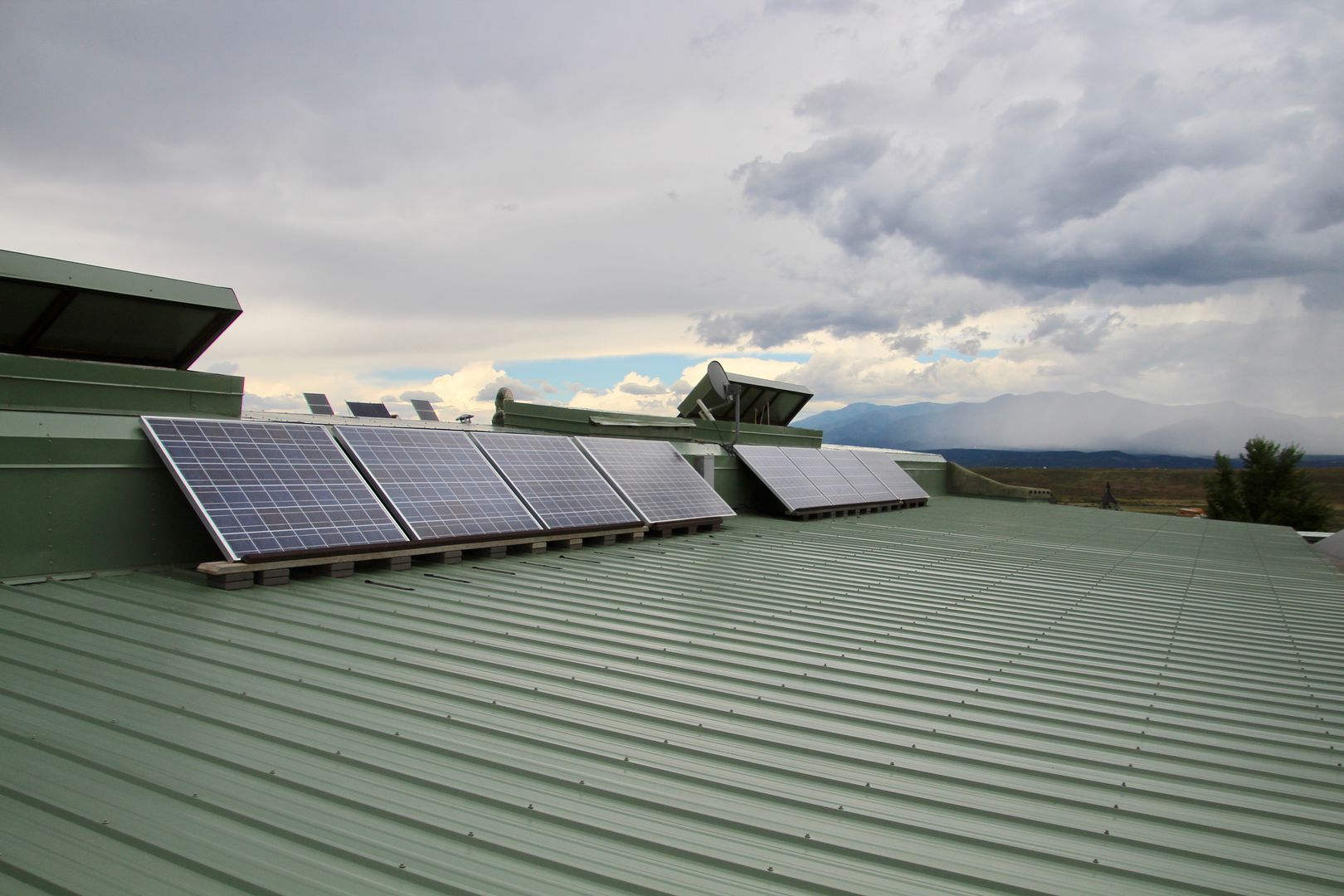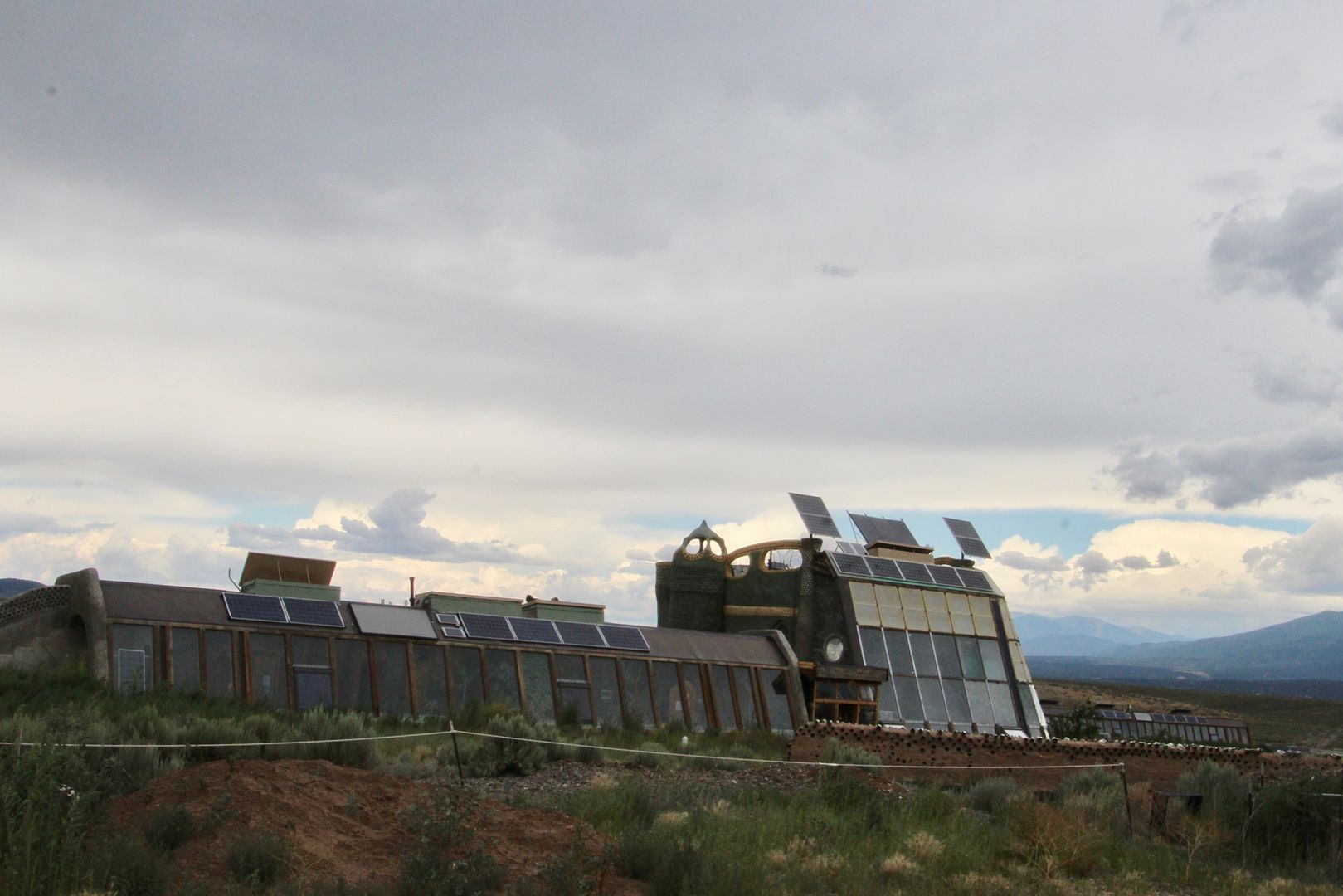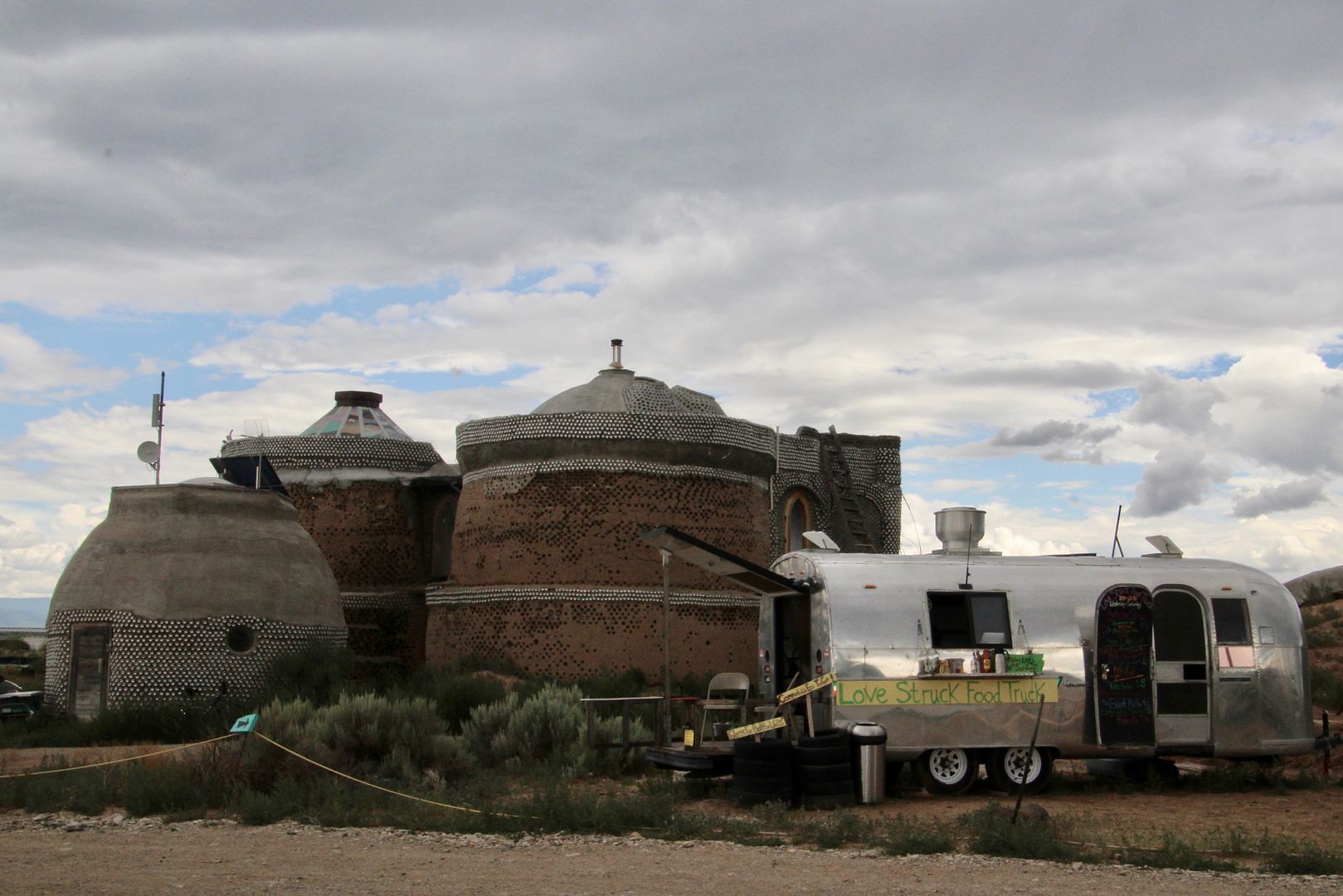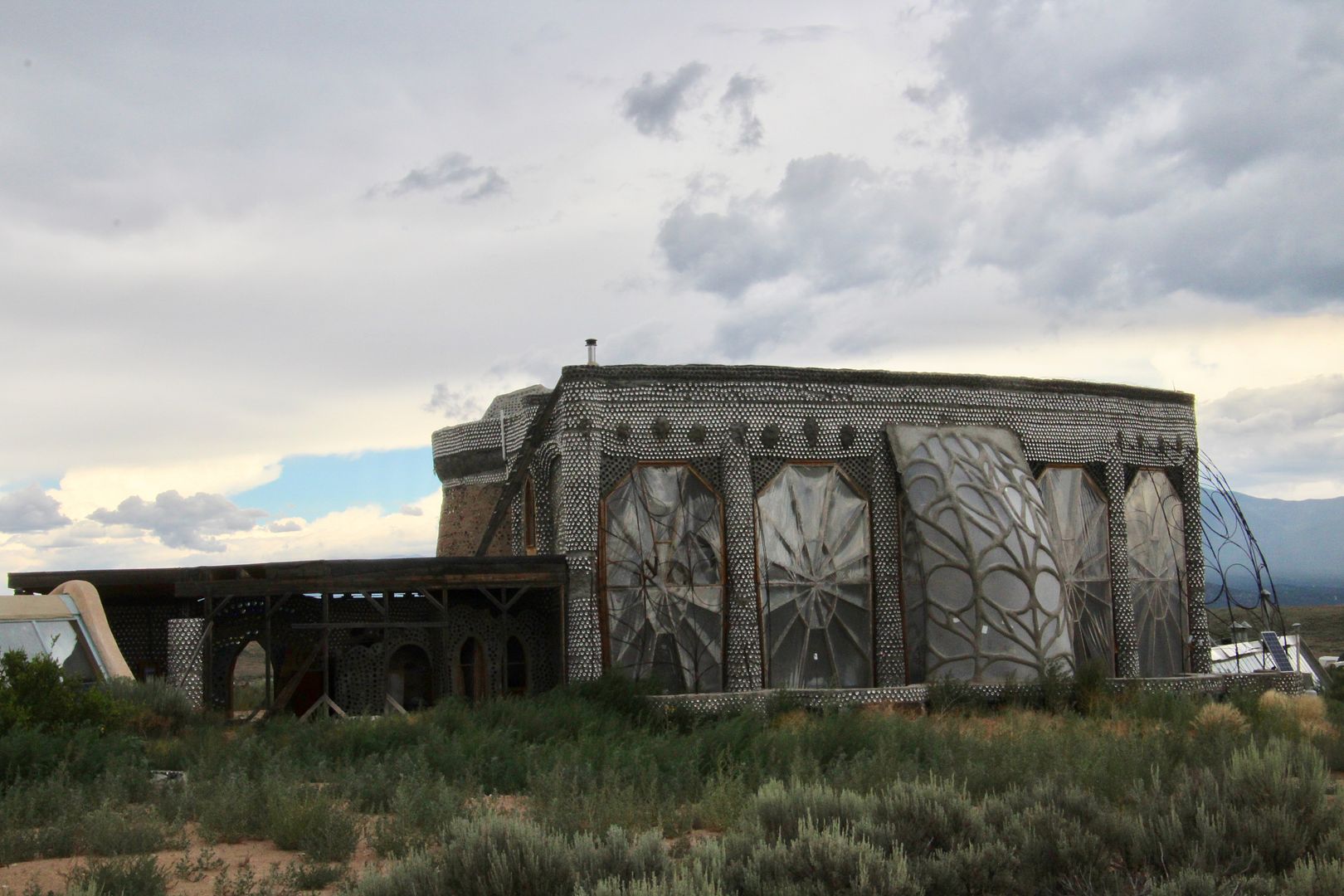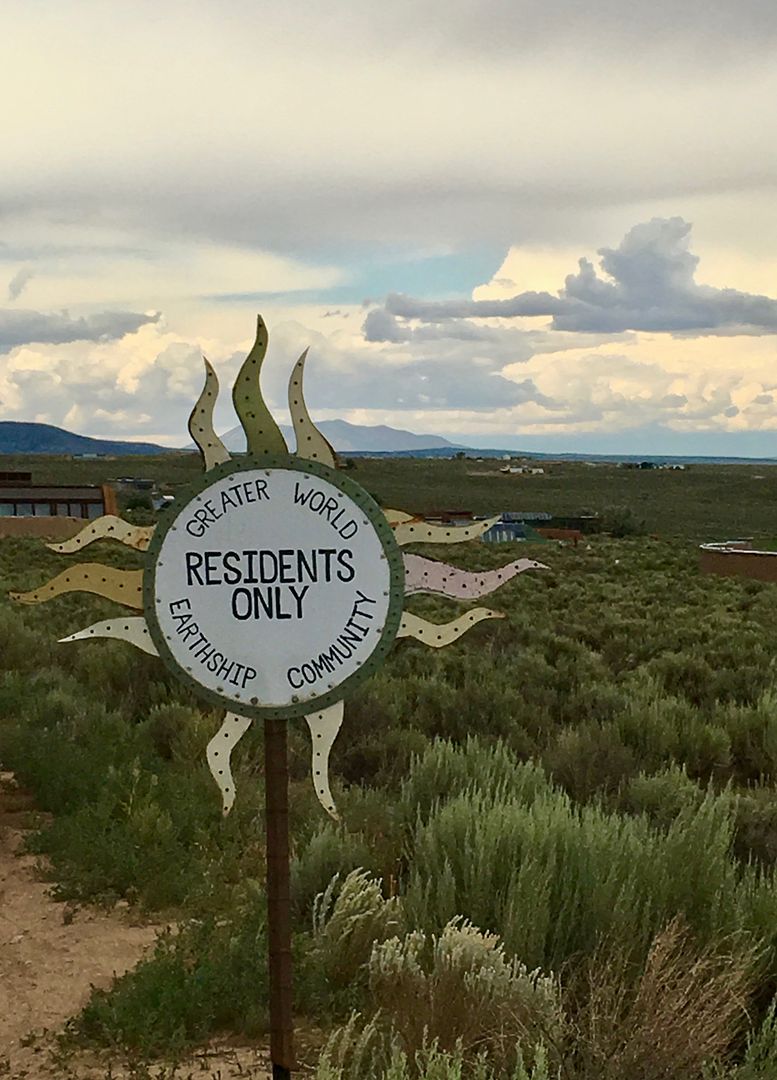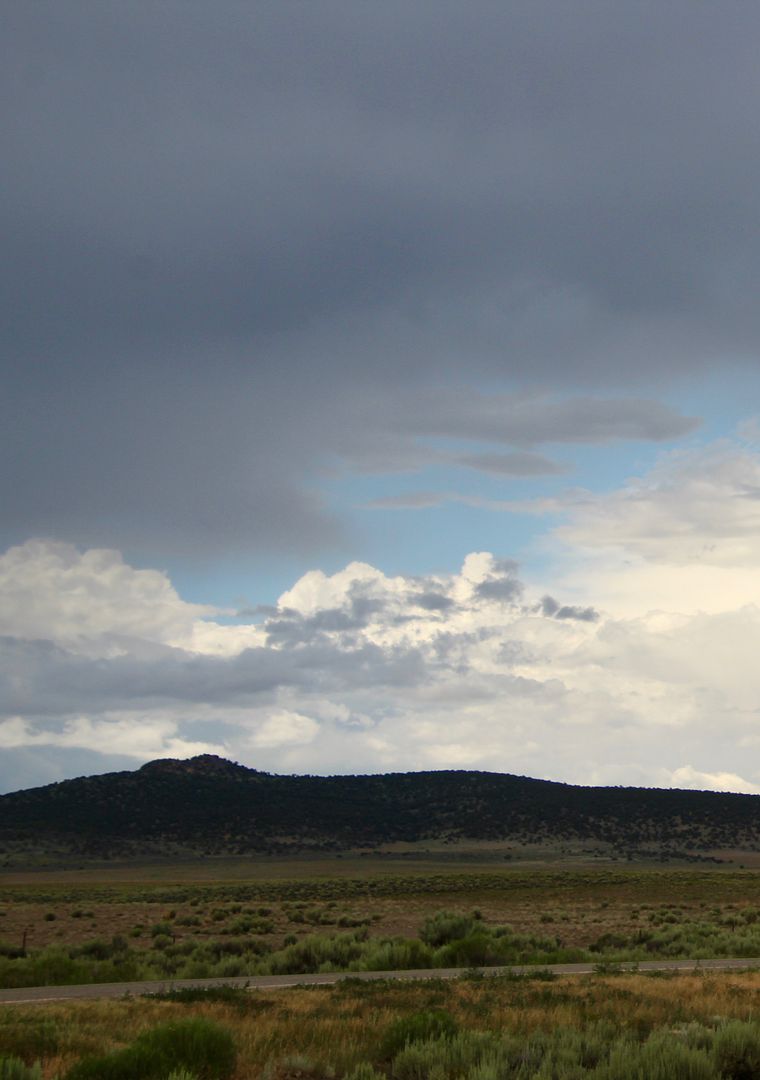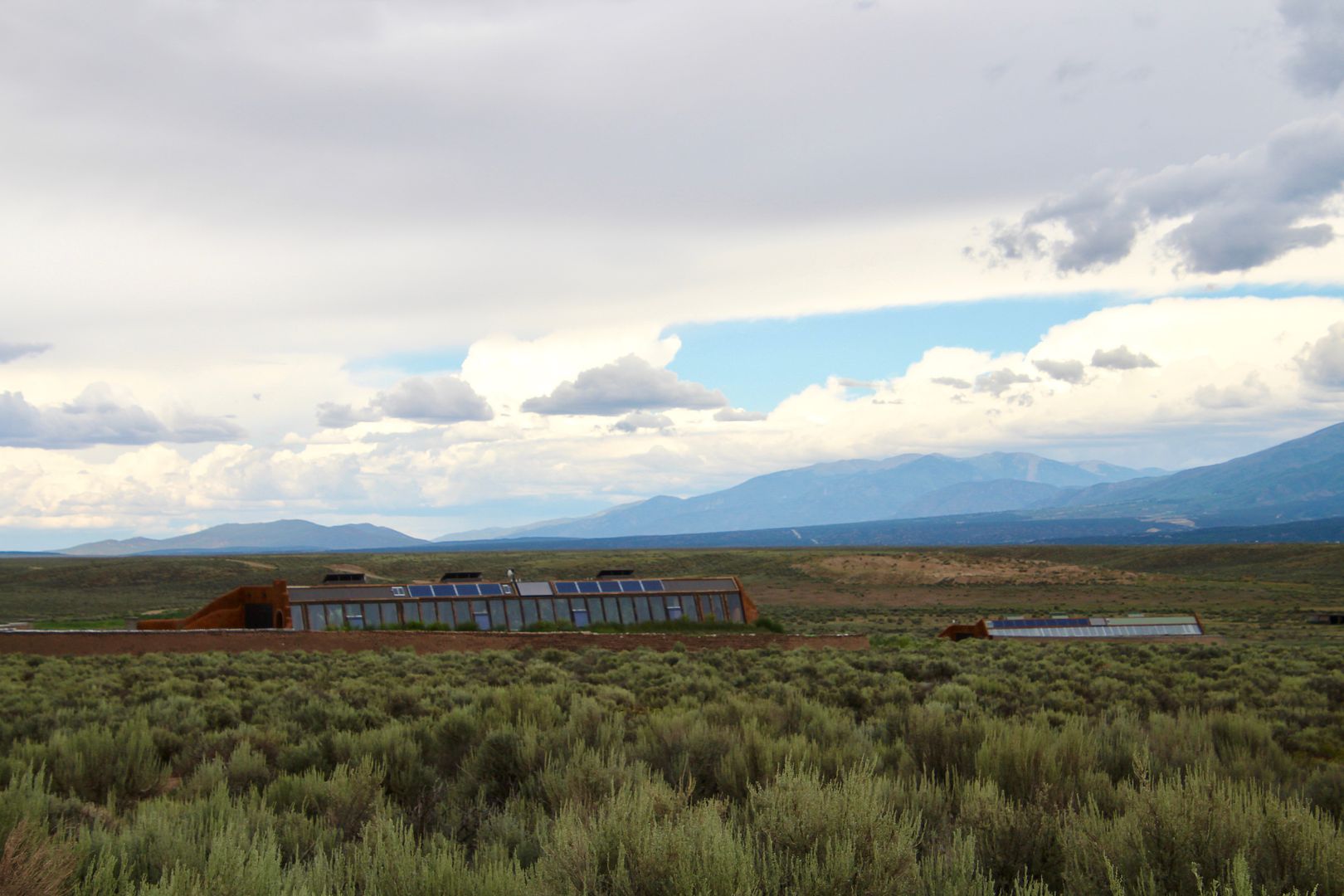We learned about several places we wanted to visit in Alibquiu, NM, about 60 miles west of Taos. John (the early riser) prepared dinner in the crockpot, packed lunch, and we set out on our adventure. (Isn’t he the best!?!)
Using directions we found online, we eventually came to the remote site (on a dirt road) of Plaza Blanca. It is located in the valley of the Rio Chama hills near Abiquiu.
Made famous by Georgia O’Keeffe’s painting, “The White Place” (1940s), today the valley is on the grounds of the Dar Al Islam Education Center and Mosque. While it is private property, they welcome visitors to hike and view this incredible place. (Many thanks to Dar Al Islam www.daralislam.org.) You will see this sign at the entrance to the dirt road that leads to the site.
This is the view from the parking area at Plaza Blanca. We began the ½ mile hike to the valley of eerie white limestone rock formations.
The 60’ tall obelisks and other spires created by erosive forces in the valley are even more amazing up close. Can you see John standing in front of these huge rocks?
The view to the south is so different than the view to the north where the white limestone dominates the landscape,
We’ve learned (during our travels) that the only way to really appreciate these unusual rock formations is to walk among them.
Our girl, Sadie, had a blast roaming around this rocky terrain. And we did not see another person during the two hours we spent there.
This area looked like pieces of gothic cathedrals with arches, buttresses, and spires!
The effects of wind and water have created windows, caves, towers, and other crazy rock formations here.
We absolutely loved the solitude, unique beauty, and fascinating rock formations here. It is so worth the effort to find this place! For directions to Plaza Blanca (and additional information), go to www.plaza-blanca.com.
Next, we drove to the small town of Abiquiu and stopped at the Georgia O’Keeffe Welcome Center. The displays provide information on the famous artist’s time spent in New Mexico.
Information about Ghost Ranch (now owned by the Presbyterian Church), tours to O’Keeffe’s Home and Studio in Abiquiu, and other local attractions was provided by the folks that work at the gift shop and information desk
.
We headed north for a quick stop at Echo Amphitheater in Carson National Forest, before visiting Ghost Ranch. But along the way, we made a few stops to admire the natural beauty here. Below is Abiquiu Lake that was created to control flooding of the Rio Grande.
The contrast of the white sandstone of Plaza Blanca to the red cliffs of this nearby area was so striking!
A few miles north of Ghost Ranch, the Echo Amphitheater is on the left side of the road (www.fs.usda.gov/recarea/carson/recreation/hiking/recarea/?recid=44462&actid=50). There is an admission fee of $2/vehicle (a real bargain!)
It is a short ¼ mile walk on a concrete path to Echo Canyon. Along the way are spectacular rock formations. There are multiple covered picnic areas along the trail.
Steps will bring you closer to the concave rock formation.
A shout from this location (at the end of the trail) will result in a pretty incredible echo effect. Our girl, Sadie, found it all very confusing as she kept looking around for the source of the sound.
It was only a quick visit, but what incredible rock formations!
We continued to our final stop in Abiquiu, the Ghost Ranch, that I will cover in my next post.
